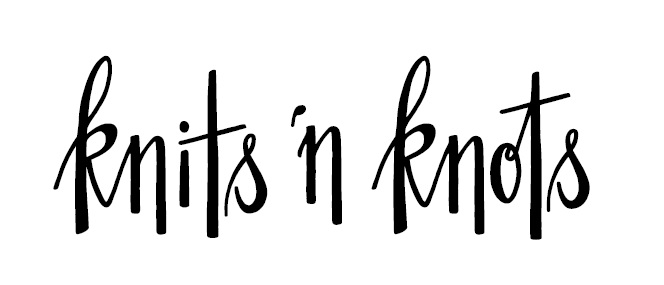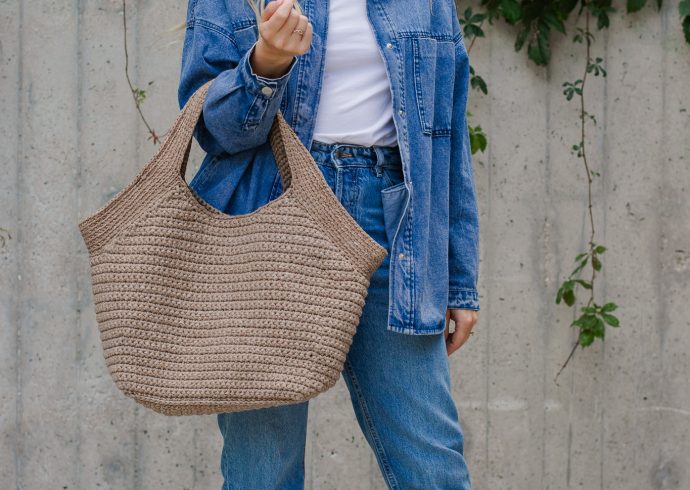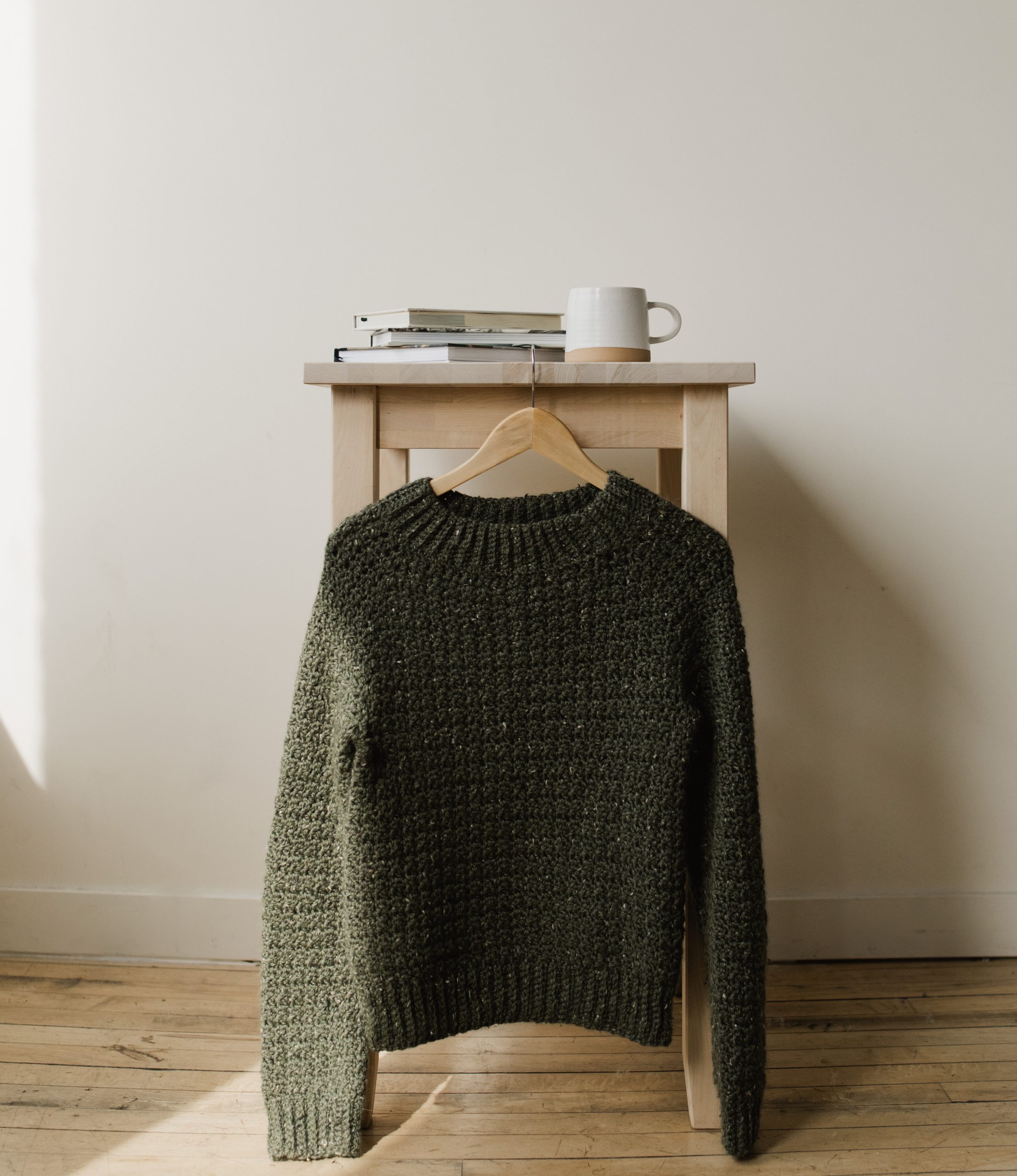
Whispering Pines – Crochet Pattern for Unisex, Textured Raglan with Short Rows (from my book: Modern Crochet Sweaters)
Hi all!
This post includes everything you need to know about the Whispering Pines Raglan, a size-inclusive crochet pattern for a unisex, top-down raglan pullover with ribbed details and an all-over stitch pattern. This is one of my first unisex designs and can be worn by any gender with a great fit.
The Whispering Pines Raglan is from my book Modern Crochet Sweaters: 20 Chic Designs for Everyday Wear. This book includes 20 size-inclusive sweater patterns using a variety of techniques and construction methods to ensure there is something of value for every skill level. Each pattern is written in 9 sizes from XS to 5XL and each size has been thoroughly tested! We had over 500+ crochet pattern testers for this book to make sure that each size fits its intended wearer in a way that makes them feel beautiful. You can buy this book with confidence, knowing that each pattern was written for you and your unique body measurements.
Before we begin, here are some quick links for you:
- Find the PDF version on Ravelry here, on Etsy here, and on my website here.
- Add your finished project and view other completed projects on Ravelry here.
- Use the pattern hashtag #WhisperingPinesRaglan on Instagram to show off your makes! Be sure to check out the book hashtag, #ModernCrochetSweaters, too!
- Shop the recommended yarn, WeCrochet City Tweed, here! (Be sure to scroll down to see other great yarn substitutes!)
- Shop my book on Amazon (US) here.
- Shop my book on Amazon (CA) here.
- Shop my book on other platforms outside of North America here.
- Read about my experience getting a book deal here!
- For any questions about this pattern, please email knitsnknotswpg@gmail.com and I’ll get back to you asap!
Order my book – Modern Crochet Sweaters: 20 Chic Designs for Everyday Wear – here!
If you want to be notified of all new pattern releases (and get exclusive discounts on all new paid patterns), sign up below!
This post contains affiliate links. This means, should you make a purchase, I will receive a small portion of the sale at no extra cost to you. All opinions are my own. View my Privacy + Disclosures Policy here.
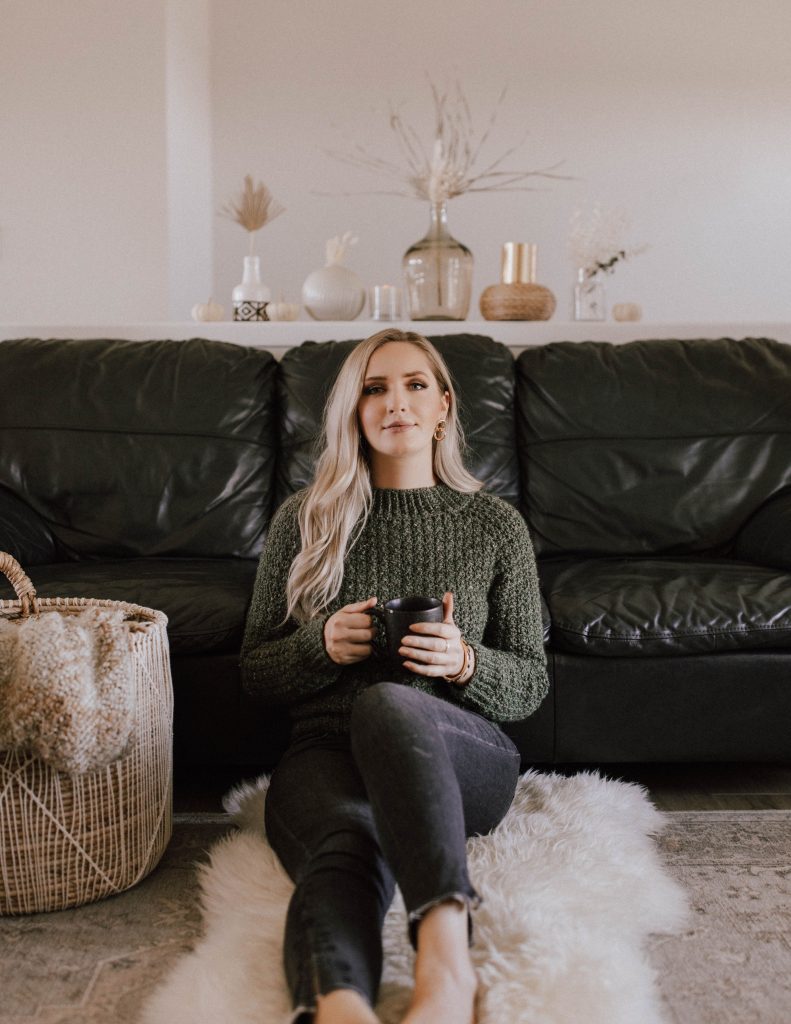
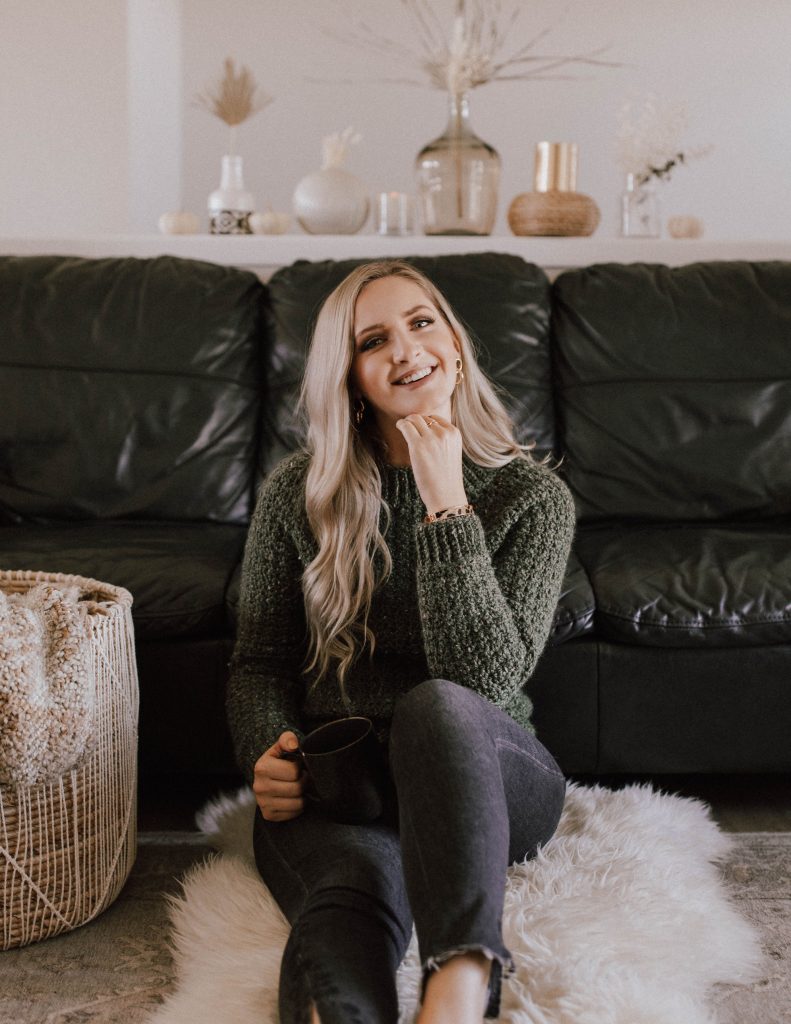
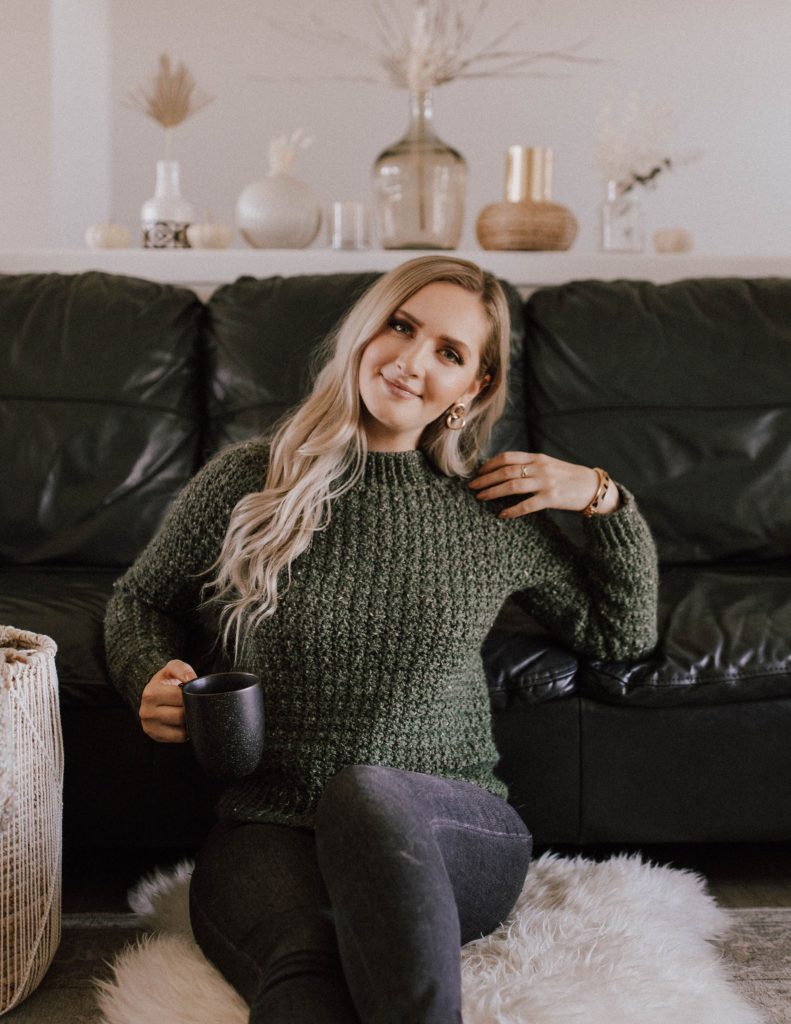
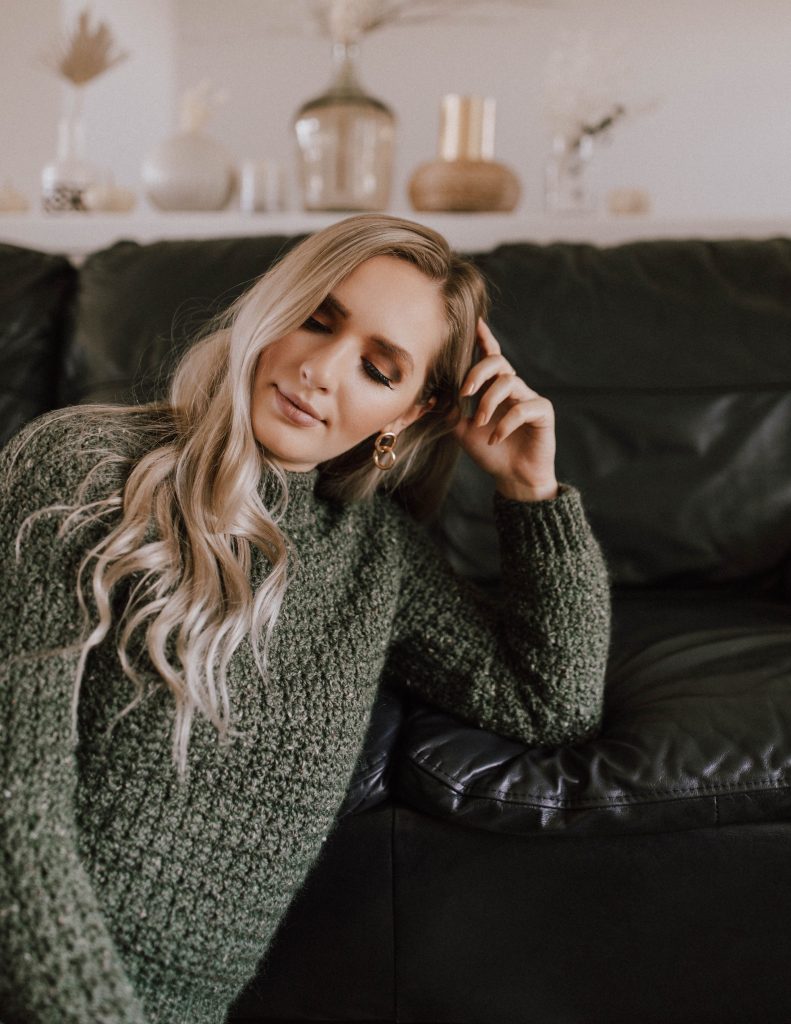
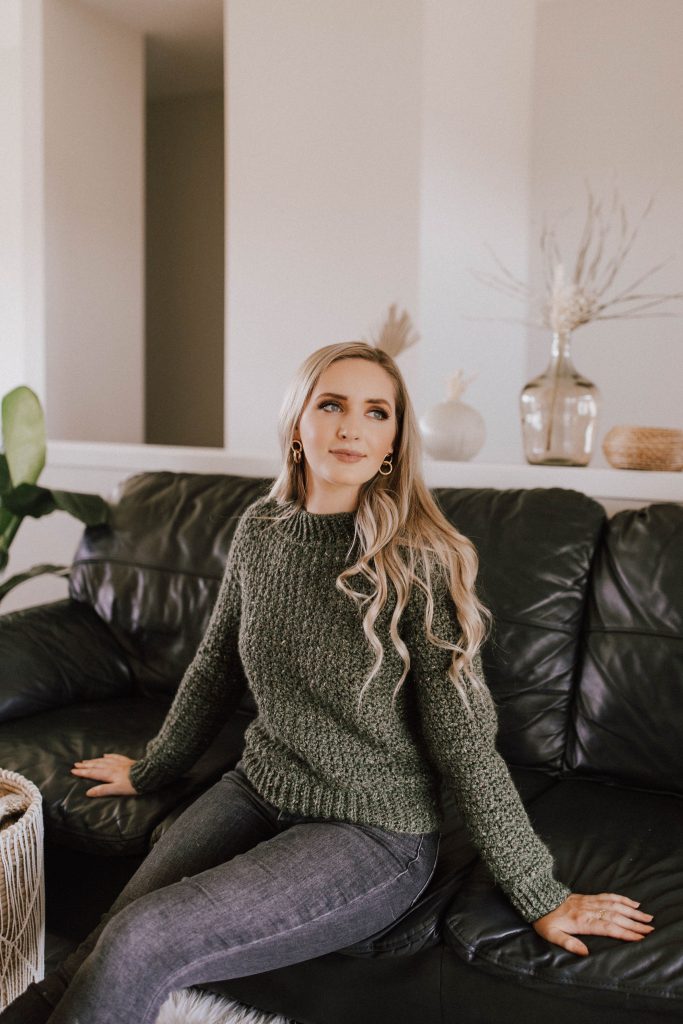
About Whispering Pines
Named after the beautifully eerie sound heard when the winter wind breathes through the tall pine trees, Whispering Pines embodies the majestic nature of the woods. The solid, textured fabric resembles the density of a forest; the tall, slender trees echo in the slim fit of the sleeves. Although one of the more challenging patterns in the book, Whispering Pines is an approachable, unpretentious design. While there are no visually complex elements to this classic sweater, it somehow feels sophisticated and intricate. Insulating and breathable, this sweater was designed with winters in mind. Whether you’re huddling around the campfire or catching up over lattes with your loved ones, this nature-inspired staple is sure to become a beloved favorite.
Note: If you love this pattern, you might also love the Rosebud Raglan, a sweater with a similar look and construction to Whispering Pines, but with a slightly different stitch pattern.
Whispering Pines: A Unisex Design
This sweater can be worn on any gender; simply reference the sizing chart and schematic in the book (or in the PDF pattern) and find the finished bust measurement in the chart that is closest to 2 inches (5 cm) larger than the chest measurement of the person who will be wearing the sweater. You can also reference the other columns in the chart when making your sizing decision. To accommodate larger arms, simply omit decreases in the sleeves as you see fit.
What is a Raglan?
The word “raglan” refers to the method of shaping in a garment. A raglan has four points of increase that radiate from the neckline towards the armpit on the front and back of a garment. A raglan sweater is still a yoke sweater; the word “yoke” simply refers to the portion of a garment below your neck but above your armpits. You may have heard the term “circular yoke” – this refers to a sweater that has the increases evenly dispersed around the neckline, rather than having 4 distinct points of increase like a raglan. A circular yoke may have multiple points of increase that radiate from the neckline, or it may have multiple rounds of increase that appear horizontally rather than vertically. Technically, all sweaters have a “yoke” area, but it’s usually referred to as a method of construction in the knitting and crochet world, distinct from a typical drop-shoulder sweater.
A raglan can be worked seamlessly from the top-down, or from the bottom-up. A top-down raglan (like this one) begins at the neckline, then increases at 4 points before separating for the sleeves and body. The last things you will crochet are the sleeve cuffs and bottom hem. A bottom-up raglan creates three separate pieces of fabric: a body and two sleeves that are worked from the bottom-up, and then joins them all by crocheting around the openings of all three pieces to connect them into one sweater. Then, decreases are worked at four points along the yoke until reaching the appropriate neckline measurement.
Getting Started: the Whispering Pines Raglan
Yarn: For sizes XS (S, M, L, XL) (2X, 3X, 4X, 5X) you’ll need 6 (7, 8, 9, 10) (11, 13, 14, 15) balls of WeCrochet City Tweed or 950 (1025, 1250, 1450, 1500) (1800, 2075, 2225, 2400) yds [869 (938, 1143, 1326, 1372) (1646, 1898, 2035, 2195) m] of another aran/heavy worsted (category #4) yarn.
- Some lighter-weight category #5 yarns may work well with this pattern, too—just be sure to check your gauge before beginning.
Hooks:
- Main gauge hook: You’ll need a size U.S. J/10 (6 mm) hook, or size needed to obtain gauge
- Hook for collar ribbing: You’ll need a size U.S. I/9 (5.5 mm) hook, or a hook that is 0.5–1 mm smaller than main gauge hook (this hook is for the collar ribbing only—it is your preference how tight you would like it to be
Notions: Tapestry needle, six locking stitch markers
- Note on stitch markers: You will need a total of six markers: four markers to mark each of the four corner yoke increases and two additional markers to mark the short rows.
Gauge: 4 x 4″ [10 x 10 cm] = 11.5 sts x 11 rows in stitch pattern with main gauge (larger) hook (see swatch instructions below)
I wanted to include the gauge swatch instructions below so that you could practice swatching with your chosen yarn to ensure you have a yarn that will work with this pattern ahead of time. This way, you can see if you have something in your stash that will work before ordering new yarn.
For swatch:
Ch 16.
Row 1: Sc in 2nd ch from hook, *dc in next ch, sc in next ch; rep from * to end of row, turn. [15 sts]
Row 2: Ch 1, sc in first sc, *dc in next dc, sc in next sc; rep from * to end of row, turn.
Rep Row 2 until work measures approximately 6″ [15 cm].
Block your swatch. Measure the inner 4″ [10 cm] of your blocked swatch to get the most accurate measurement.
Getting Started: Knowing Your Measurements
This book uses the Craft Yarn Council (CYC) to determine sizing. The CYC is the industry standard when it comes to knit and crochet sizing. While you will be able to produce a beautiful sweater by following the written patterns, I also like to include customization tips throughout each pattern so that you can adjust your sweater based on your unique body measurements; for example, shortening or lengthening a sleeve, or adjusting for a larger upper arm than written for your size. This way, you can modify the pattern with confidence, if needed. When making garments for myself, I usually need to shorten tops or sweaters because I have a short torso. My hips also fall under a different size than my bust. Not everyone fits perfectly into these sizing standards; they are simply averages, not set-in-stone numbers.
Understanding how your body deviates from the CYC standard measurements gives you the ability to tailor a sweater to fit you perfectly, rather than feel disappointed that your body doesn’t fit into the sizing standards. I recommend that you measure the largest part of your bust and then refer to the CYC website (click here) to find out which size you would fall under. Then, look at the other measurements that are included for your size, and see which of these measurements deviate from your actual body measurements. Knowledge is power, and once you understand how your body deviates from the CYC standards, you will be able to anticipate this deviation and assume it translates through most patterns. For example, if your upper arm circumference is slightly larger than the CYC sizing chart reads, then you can expect you may have to ignore a few decrease rows when working the sleeves of your next sweater, or even follow the sleeve instructions for the next size up, if possible.
Customization Ideas + Tips When Crocheting This Pullover
Tips
- Sizing: This sweater is written in nine sizes as follows: XS (S, M, L, XL) (2X, 3X, 4X, 5X). Make sure to follow the numbers for your size only.
- Stitch Counts: Stitch counts are listed after each row/rnd. If no stitch count is given, there has been no change since the previous row/rnd. If only one number is provided, it applies to all sizes.
- Reversible: There is no right side or wrong side of this fabric; both sides are identical. You choose which side to wear as the “right side.”
- Turning Chain: The turning chain does not count as a stitch.
- Self-Striping Yarns: Because this sweater is worked in joined, turned rounds, you may want to avoid using self-striping yarn as this type of yarn will create colour jogs and make the back-join (the seam) much more visible.
- Construction: Whispering Pines features raglan shaping and is worked seamlessly from the top down. After completing the yoke increases, short rows are added to the back edge to raise the back-neck, then the yoke is separated to create space for the body and the sleeves. The body is worked next, and the sleeves are worked last. The neckline ribbing at the collar can be worked at any point.
Customization Ideas
- To make a sweater of any length: To adjust the length, simply work Rnd 1 of the Body section, and then work in pattern until your body measures 3.5″ (9 cm) shorter than your desired length. Then, proceed to “Bottom Hem Ribbing”.
- For a lighter, summer version: Try matching gauge with a light worsted or even DK weight yarn instead of an aran/heavy worsted weight yarn. The resulting sweater will have the same measurements, but will be much more airy and lightweight.
- Two fingering weight yarns held double might work, too!
- Or try a DK weight held double with a mohair! I like the mohair called Aloft from WeCrochet.
- To omit the ribbed cuffs, hem, and neckline: Work the body and sleeves in the established stitch pattern until reaching your desired length. Once this length is reached, you can fasten off. For the neckline, you can go back and work one round of single crochets around the neckline for a neat-looking neckline, if you’d like! This neckline is on the wider side to accommodate the ribbing, so you will have to use your judgement if you decide to omit the neckline ribbing or not. Try on your sweater to see how you like the fit without it. To simply work a shorter neckline ribbing, see below.
- To adjust the width of your ribbing:
- For taller ribbing, work a longer beginning chain when starting your ribbing.
- For shorter ribbing, work a shorter beginning chain when starting your ribbing.
- For a colour-blocked sweater: Simply change colours whenever you would like the colour changes to appear. To do so, work the last stitch of the round with the old colour, then work your slip stitch join in the new colour. Drop (and cut) the old colour and continue crocheting with your new colour.
- To turn your sweater into a short-sleeve top: Follow the pattern as-written up to the sleeve section. Work Rnd 1 for the Left Sleeve and Right Sleeve as-written, and then work a few rounds in your established stitch pattern until reaching your desired length, while also working decreases as outlined in the pattern. The row before you work the ribbing, you can try working multiple sc2tog around the sleeve opening to help tighten it to your arm. You can also work the sleeve cuff ribbing in a smaller hook than written in the pattern to help keep it taught on your arm.
- For tighter (looser) sleeves: If you need tighter or looser sleeves than written for your size, simply add (or eliminate) decrease rounds as you see fit! The exact round numbers are written out for you, but you can adjust these as desired. Keep track of any modifications you make to your first sleeve so that you can easily make the same modification to your second sleeve.
- For longer (or shorter) sleeves: For longer or shorter sleeve than written for your size, simply add or subtract non-decrease rnds as you see fit. Keep track of any modifications you make to your first sleeve so that you can easily make the same modification to your second sleeve.
- To work a 2-tone version of this sweater with a contrasting colour for the ribbing: Work the pattern as it’s written in your main colour. Work all ribbing in contrasting colour. If you find that the colour blocking is not a solid enough of a line (for example at the neckline), before working the bottom ribbing, change to your new contrasting colour and sc evenly around the bottom edge. Then work the bottom ribbing into this last row. This row of single crochet will give the bottom edge a nice clean row onto which you can work the ribbing. You can work one row of single crochet along your neckline too, before working your ribbing as instructed.
- To turn your sweater into a sweater-dress: Try working the length until your desired dress length, and then create belt loops and a long tie consisting of single crochets as instructed here. This creates a boxy fit with a cinching waist tie rather than shaping it to your body.
- To add a tie and belt loops:
- For tie – leaving tail long enough to seam belt loop to your sweater dress, work a regular chain that is long enough to wrap around your body and tie together. Sc in 2nd ch from hook and in each ch across, working into the back-bumps of your chain, turn. Ch 1, sc into each st across, turn. Repeat this last row until reaching your desired tie thickness
- For belt loops – work a chain that measures long enough to accommodate the thickness of the tie you have created. Sc in 2nd ch from hook and in each ch across, turn. Ch 1, sc in each st across, turn. Repeat this last row until desired belt loop thickness. Fasten off, leaving a tail long enough to seam your belt loop to your sweater dress. Seam in desired placement, probably along the sides below your underarms. Use the other tail from the beginning of your belt loop to seam the opposite end of the belt loop to your sweater.
- To add a tie and belt loops:
- For balloon-sleeves: Work the sleeves without any decreases. Then, once you are ready to work the sleeve cuffs, work the following round all in single crochet with multiple sc2tog (single crochet 2 stitches together) until reaching your desired wrist circumference. Then, work the ribbing instructions outlined under “Sleeve Cuff Ribbing”.
Short Rows Explained
Yes, this pattern has short-rows. No, they are not complicated!
I promise you – if you just read the instructions slowly, they will make complete sense to you and you will wonder why you have been intimidated by them!
What are short-rows? Short rows are exactly as they sound – they are short rows – that are worked across part of your project in order to provide shaping to your work. They are most often used to raise the back-neck in tops and sweaters, as well as to create bust darts; however there are many uses for short-rows. In this case, we are going to use them to raise the back-neck of our sweater to make it more comfortable! This allows the sweater to sit nicely on your shoulders without the front neckline putting pressure on your throat (because who wants that?).
Okay, let’s get this started!
Up until this point in the pattern, you have been working in joined, turned rounds to crochet the yoke. It currently looks like a square with a hole in the middle for your head. Now, you are going to cut your working yarn because we are going to re-attach it at the corner of the yoke so that we can work across this entire back-edge without worrying about the seam. We do this so that we can work a few rows across the entire back-edge; if we left our starting point at the seam, then we wouldn’t be able to work across the entire back-edge. So, cut your yarn, fasten off, weave in those ends, flip your work over so that the V’s of the stitches are facing away from you (this is just to keep the back-and-forth rows consistent), and join your yarn in the back corner of your yoke as shown below.
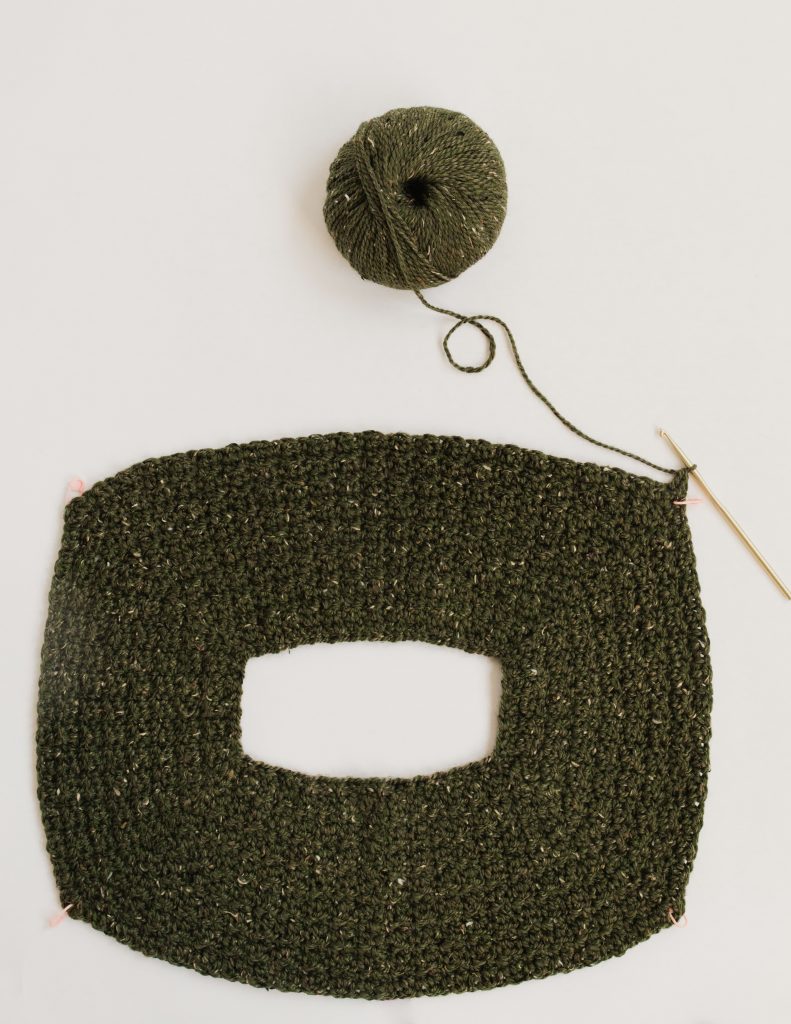
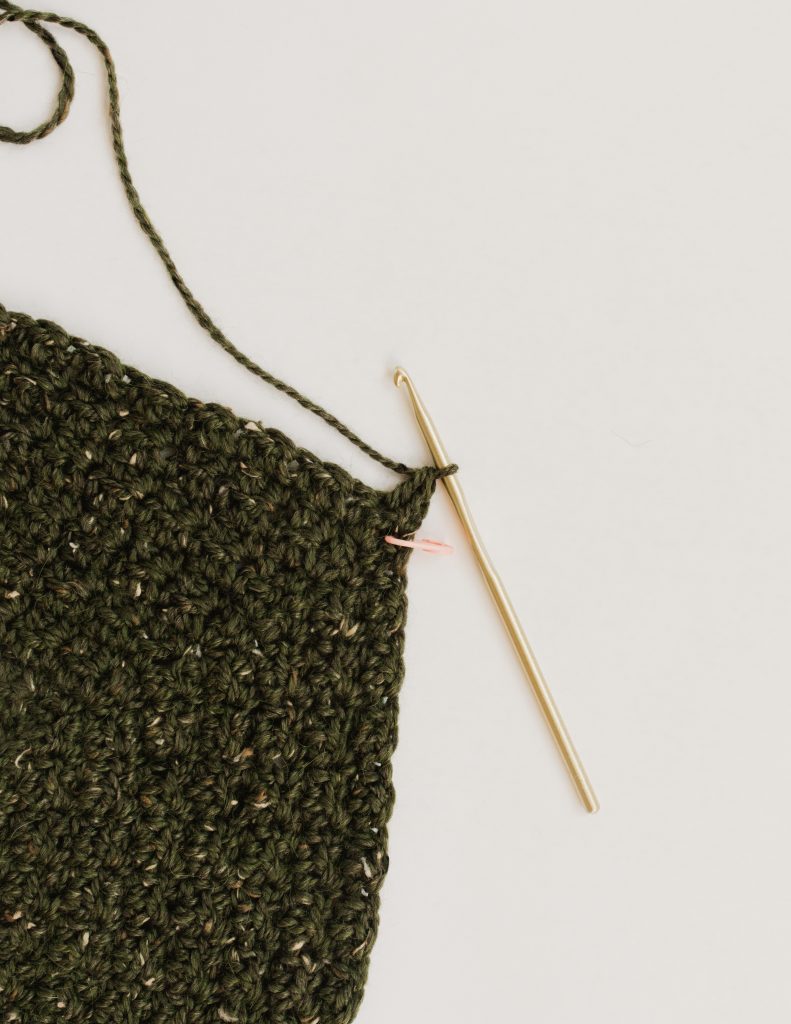
Once you reach the opposite corner, turn your work to begin crocheting back on this row you just worked (this row is called a short-row because it was only worked onto part of our project).
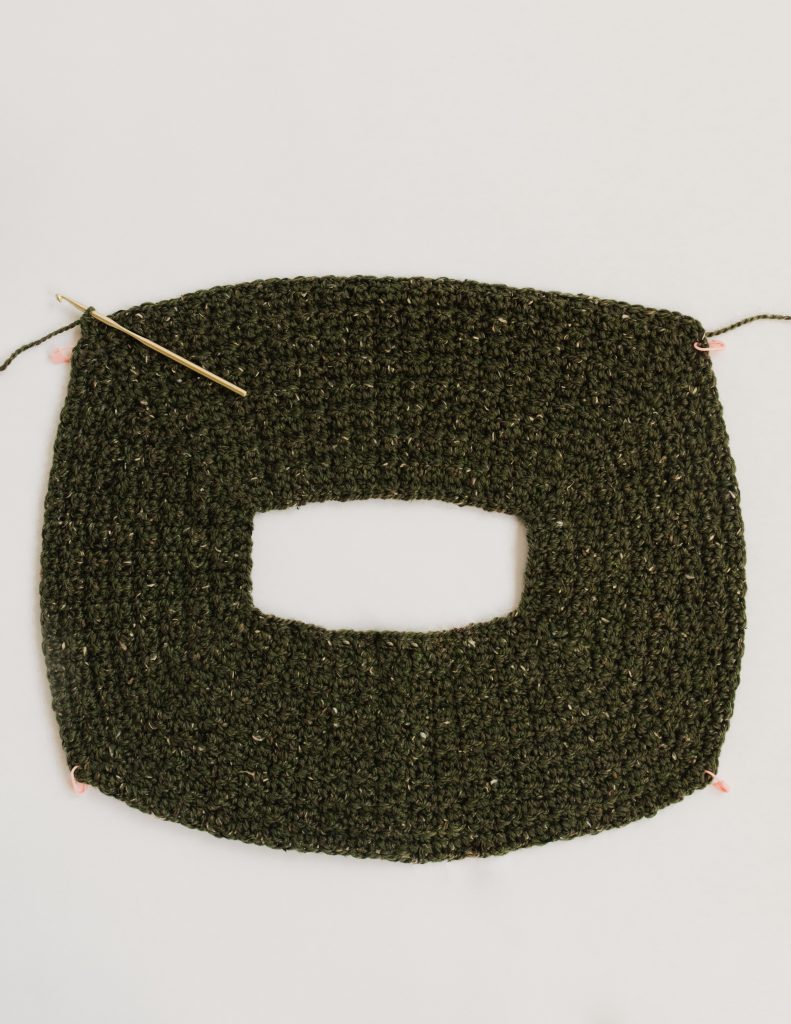
For rows 2-4, you will simply work in pattern as follows: Ch 1, work in patt to end of row, turn.
Now, fasten off and weave in this end. Place a distinct marker or scrap yarn into the first and last stitch from Row 4 to help easily identify the short rows later on. This will be helpful with sleeve placement.
You should now have 6 stitch markers placed in your yoke: 4 from the corners of your yoke that you placed earlier, and 2 from these short-rows.
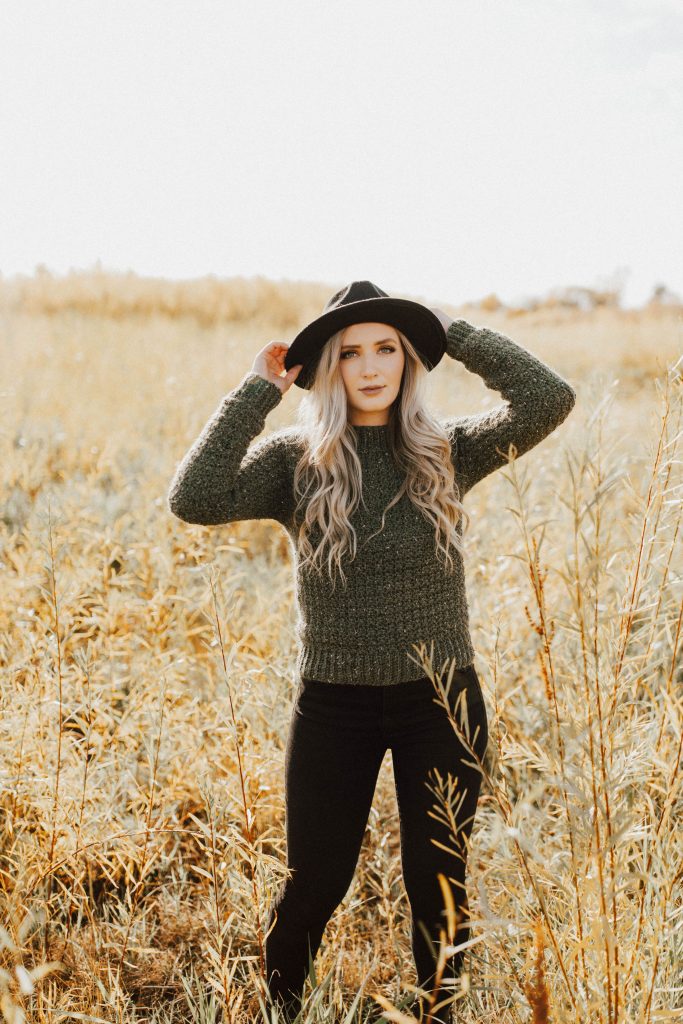
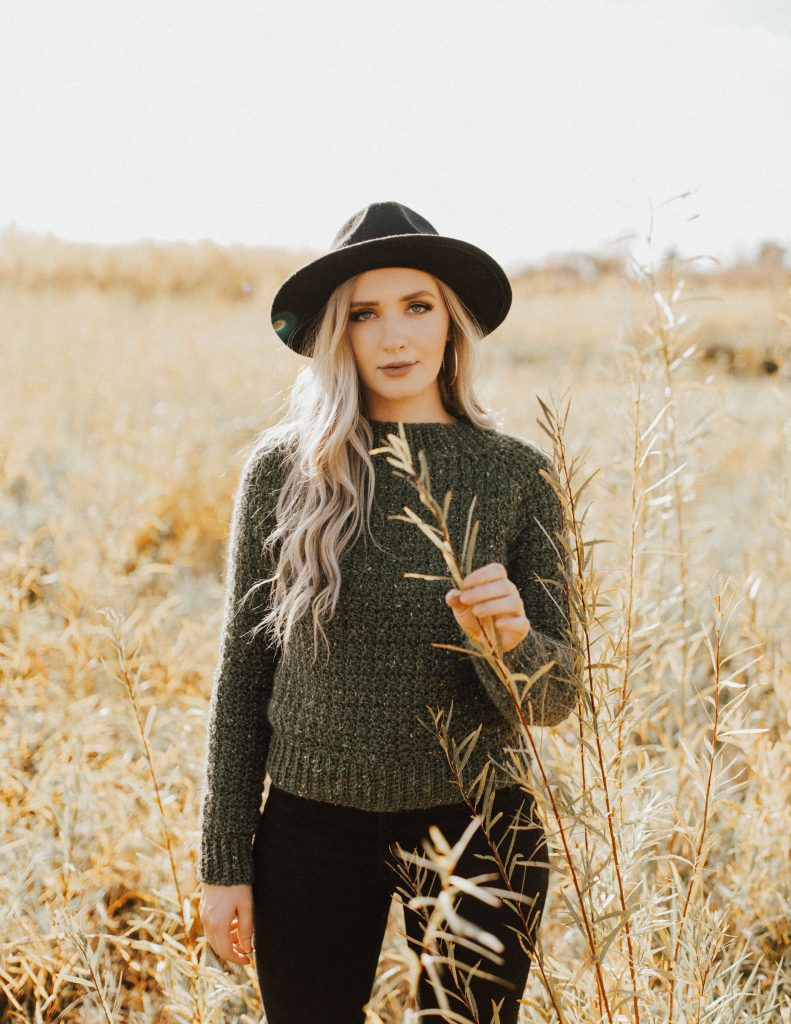

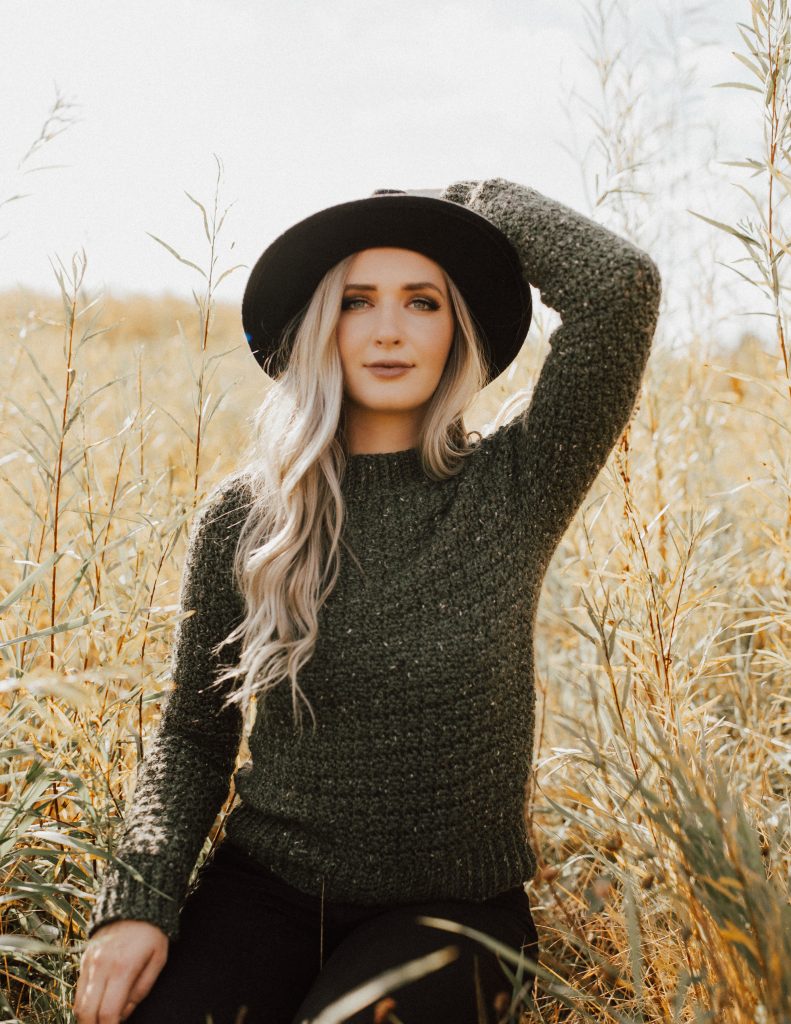
Yarn Substitutions
The yarn used in my sample is a 55% Merino wool, 25% Superfine alpaca, 20% Donegal tweed blend, however you are free to use any fiber content that you like for your own version! Always swatch before beginning so you can be sure your chosen yarn creates a fabric you love! Listed below you will see a variety of yarns that will work just fine in place of City Tweed, so long as you match gauge!
Substitute WeCrochet City Tweed Aran with any similar aran or heavy worsted weight, category #4 yarn that matches gauge. Some lighter-weight category #5 yarns may work well with this pattern, too. For a lighter, warm-weather version, try matching gauge with a light worsted or even a DK weight yarn instead of an aran/heavy worsted weight yarn. The resulting sweater will have the same measurements, but will be much more airy and lightweight—just be sure to check your gauge before beginning, no matter what yarn you use.
Lion Brand Yarns:
- Lion Brand Basic Stitch (Anti-Pilling)
- Lion Brand Chainette
- Lion Brand Cotton-Ease
- Lion Brand Heartland
- Lion Brand Jeans
- Lion Brand Jeans Colors
- Lion Brand Schitt’s Creek Yarn
- Lion Brand Vanna’s Choice
- Lion Brand Wool-Ease
LoveCrafts Yarns:
- Paintbox Simply Aran
- Rico Fashion Modern Tweed Aran
- Rico Design Basic Super Big Tweed Aran
- Schachenmayr Soft & Easy
- So Crafty Aran
- Cascade Pacific Worsted
Knit Picks/WeCrochet Yarns:
- WeCrochet/Knit Picks Mighty Stitch
- WeCrochet/Knit Picks Wonderfluff
- WeCrochet/Knit Picks Wonderfluff Ombré
- WeCrochet/Knit Picks Comfy Color Mist
- WeCrochet/Knit Picks Woodland Tweed
- Yarnart Creative (DK in label, aran in gauge standard)
Other Brands:
- Hobbii Divina
- Loops & Threads Impeccable (Michaels Brand)
- I Love This Wool Naturals in Biscuit
- Must Be Merino Aran
- Yarn Bee Rustic Romantic
- Yarn Bee Soft and Sleek Low-Pill
- Yarn Bee Tweed Indeed
- Yarn Bee Yarn ID
- Alise Lanagold Maxi
- Drops Paris
Pattern Tester Photos
There were 500+ pattern testers for this book because I wanted to ensure all sizes are satisfied with the pattern and fit! Below you can see photos from the testing process to see how the sweater looks on different bodies with different modifications made using a variety of yarns.
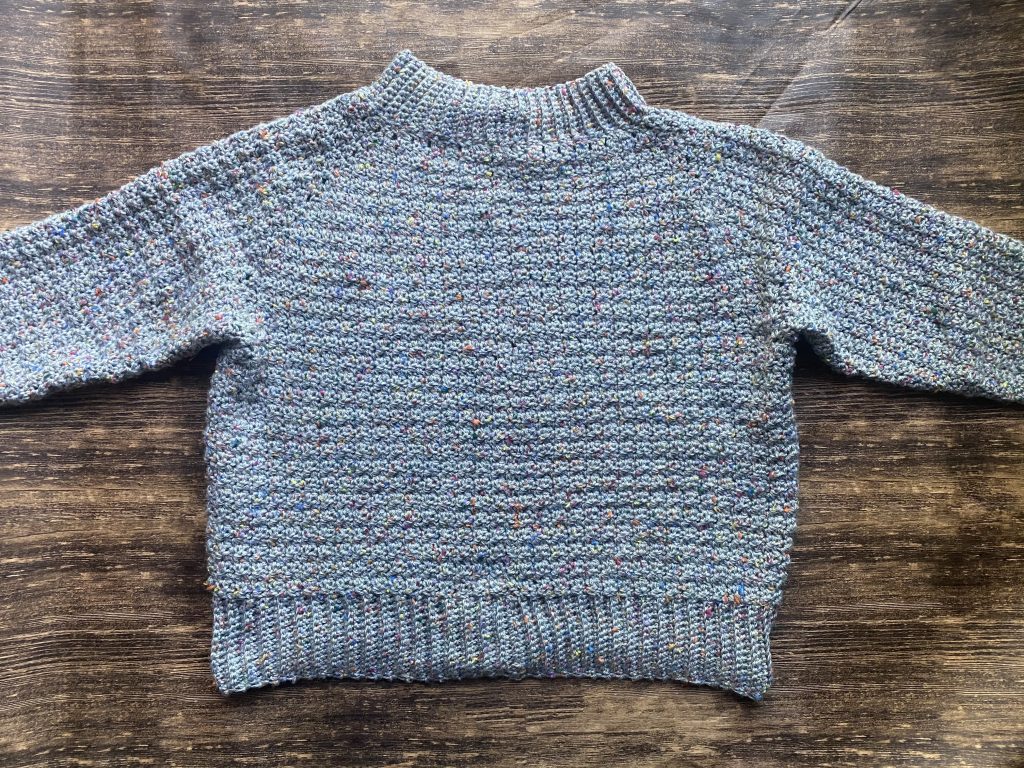
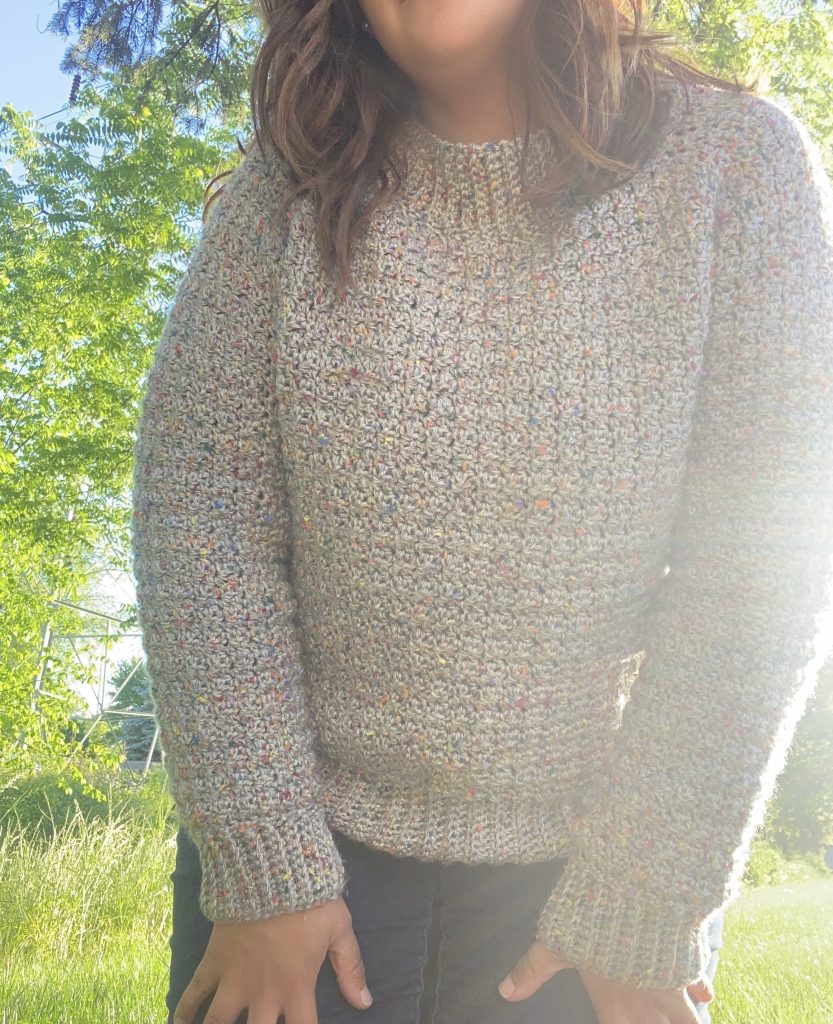
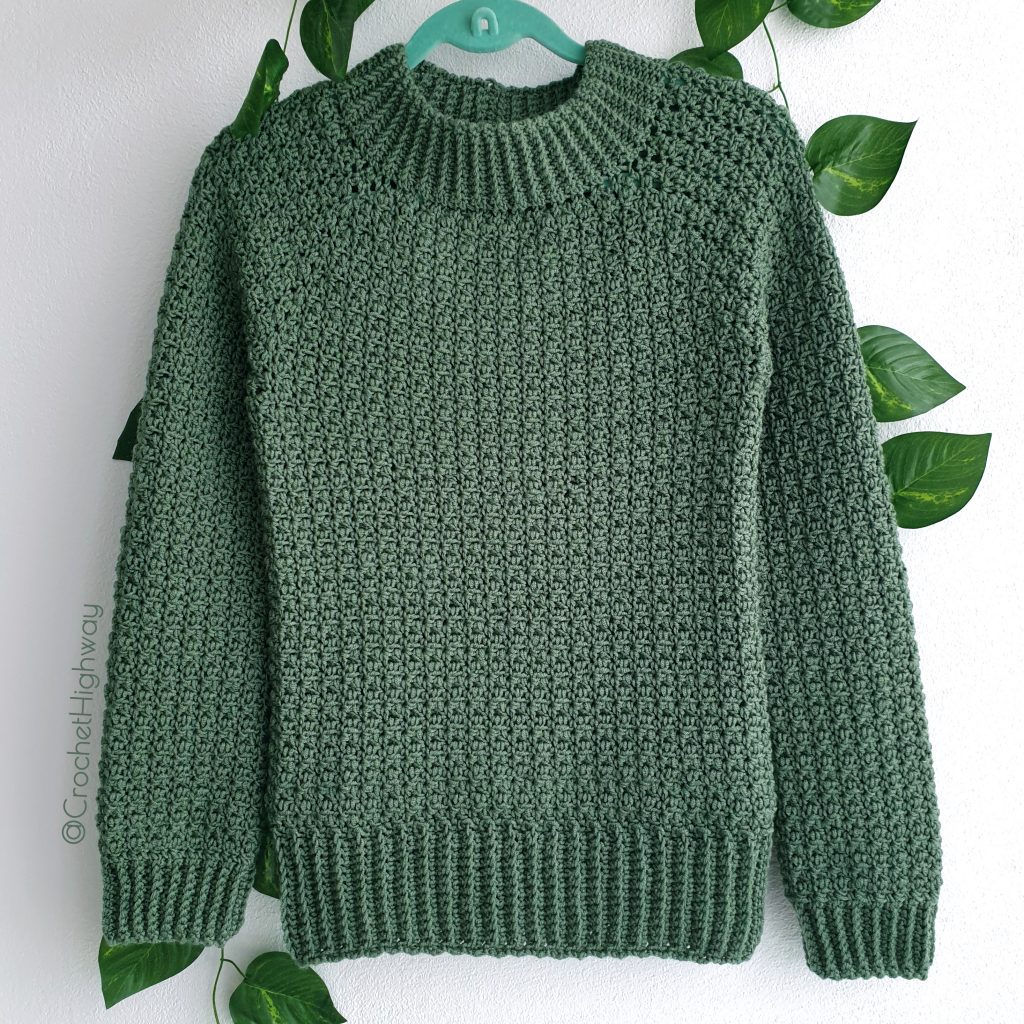
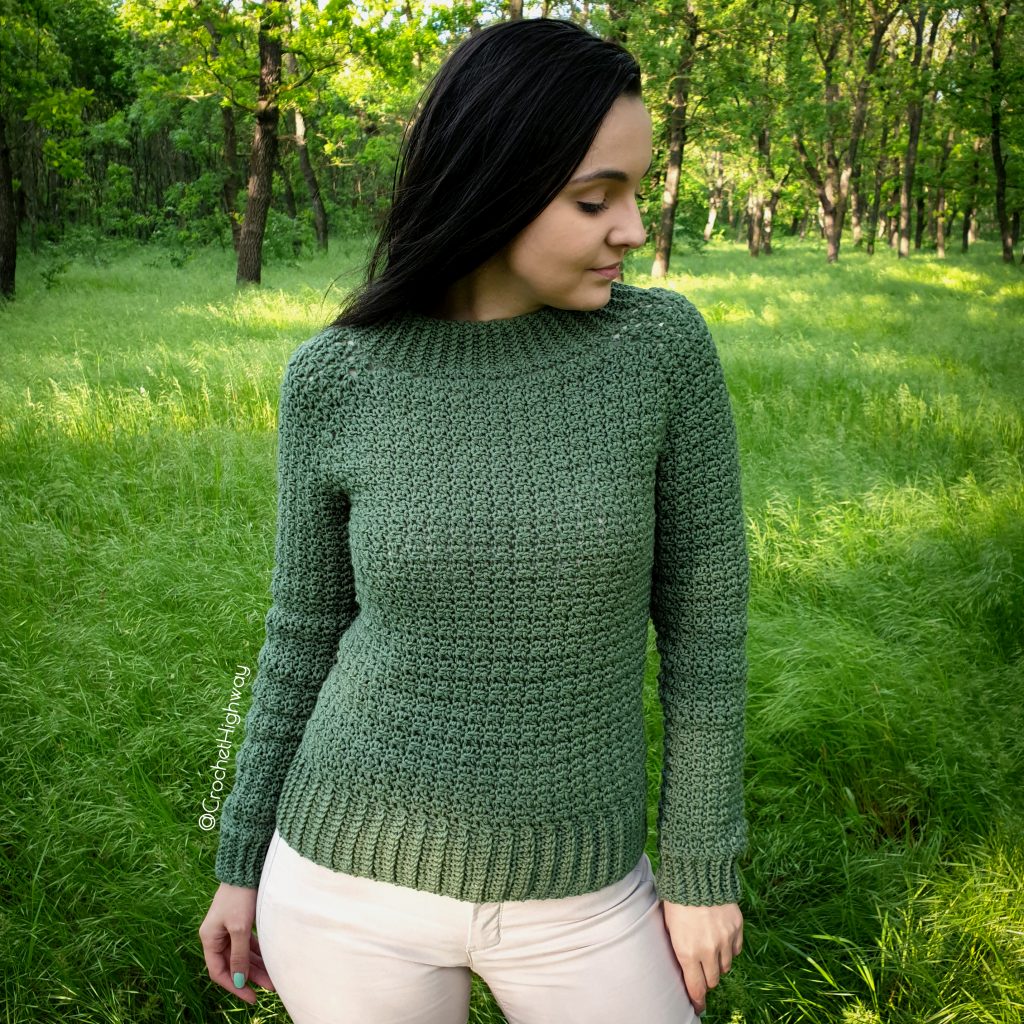
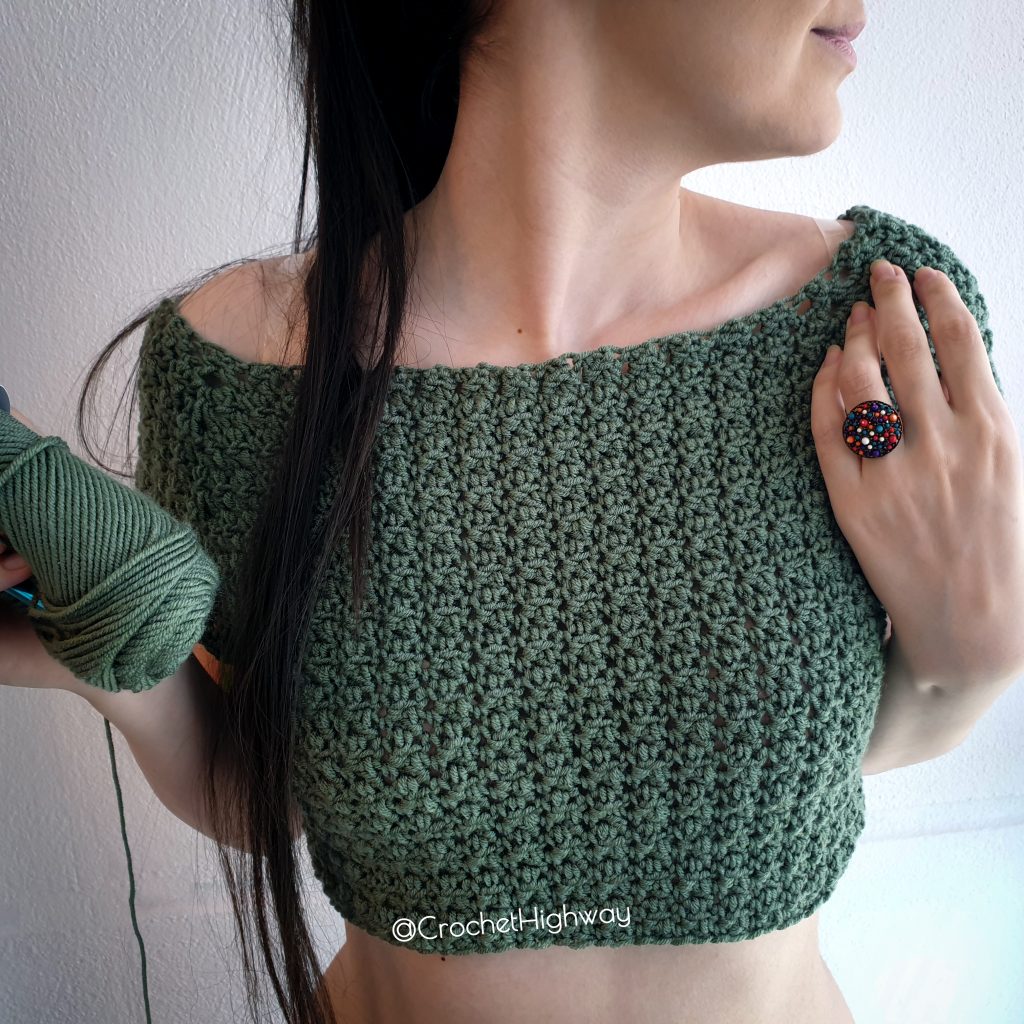
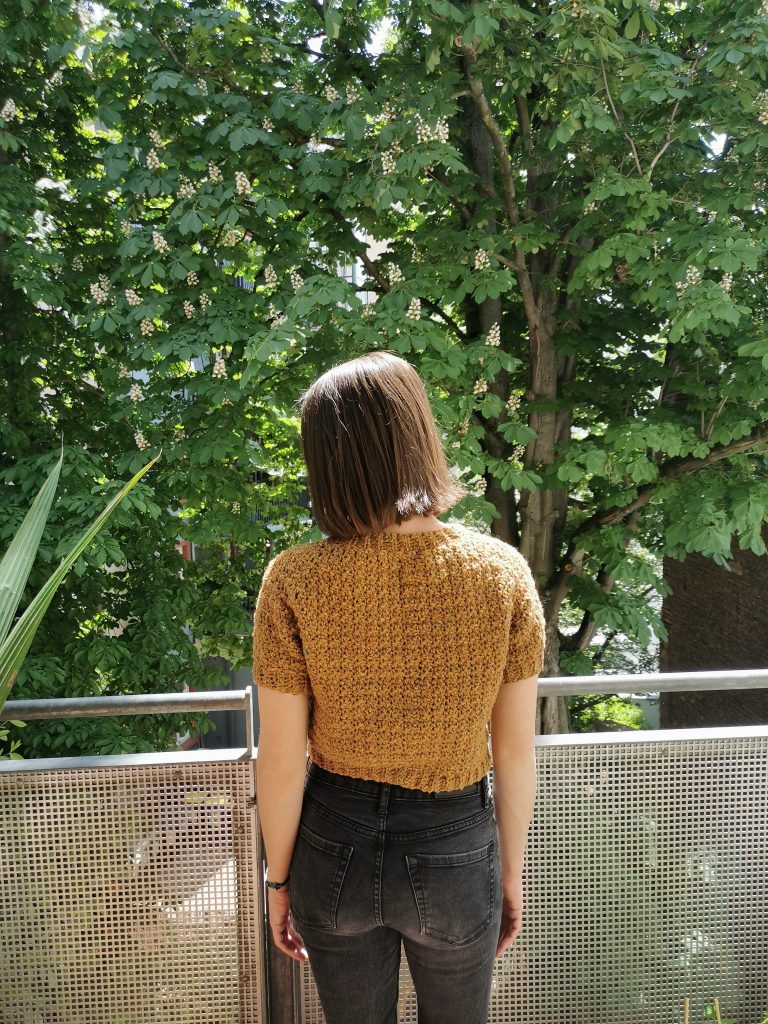
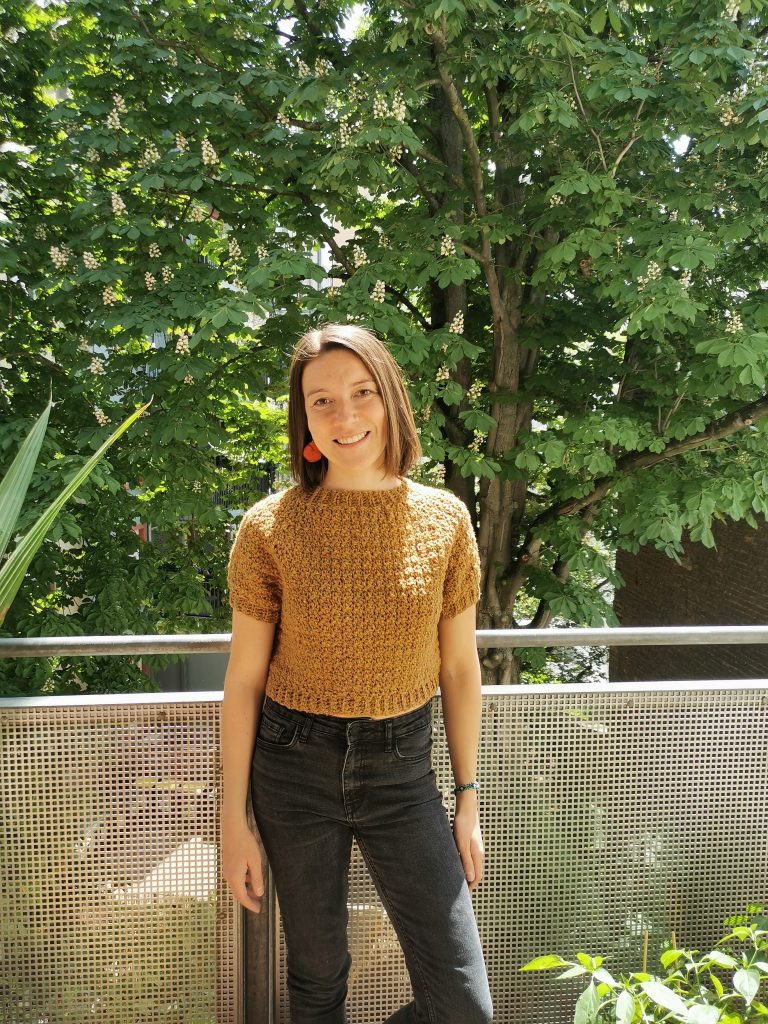
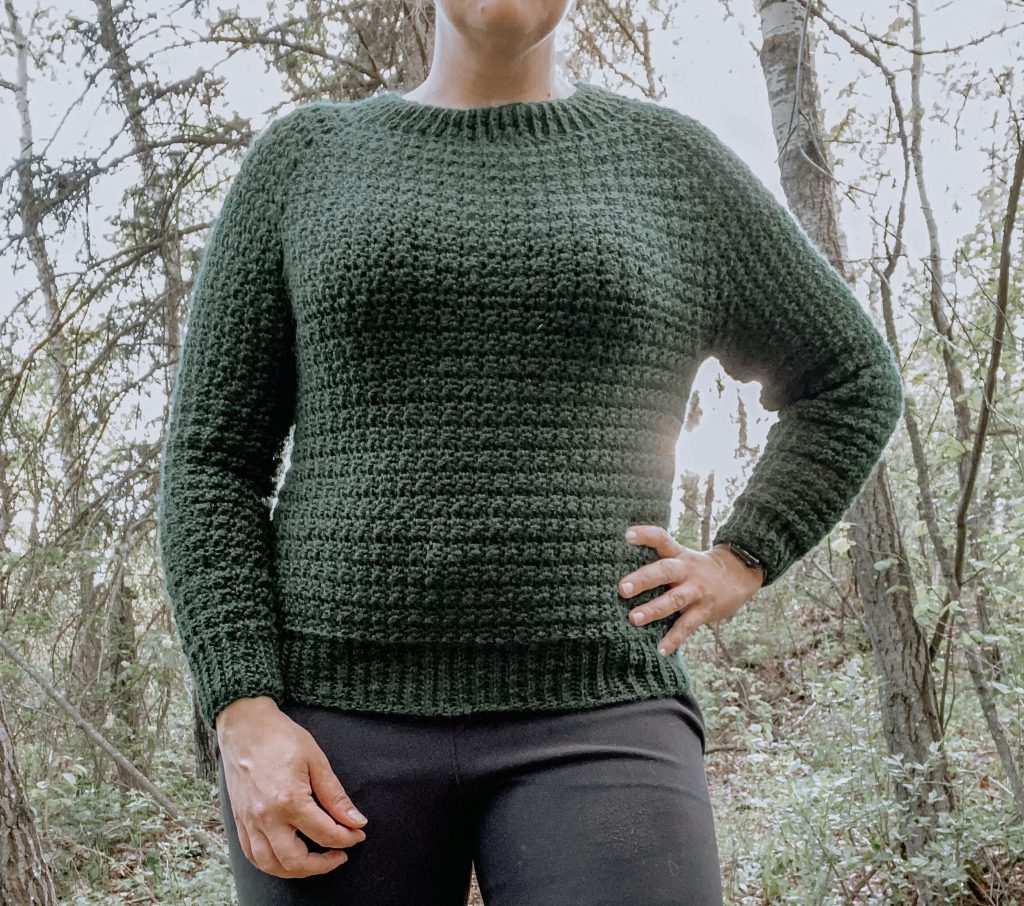
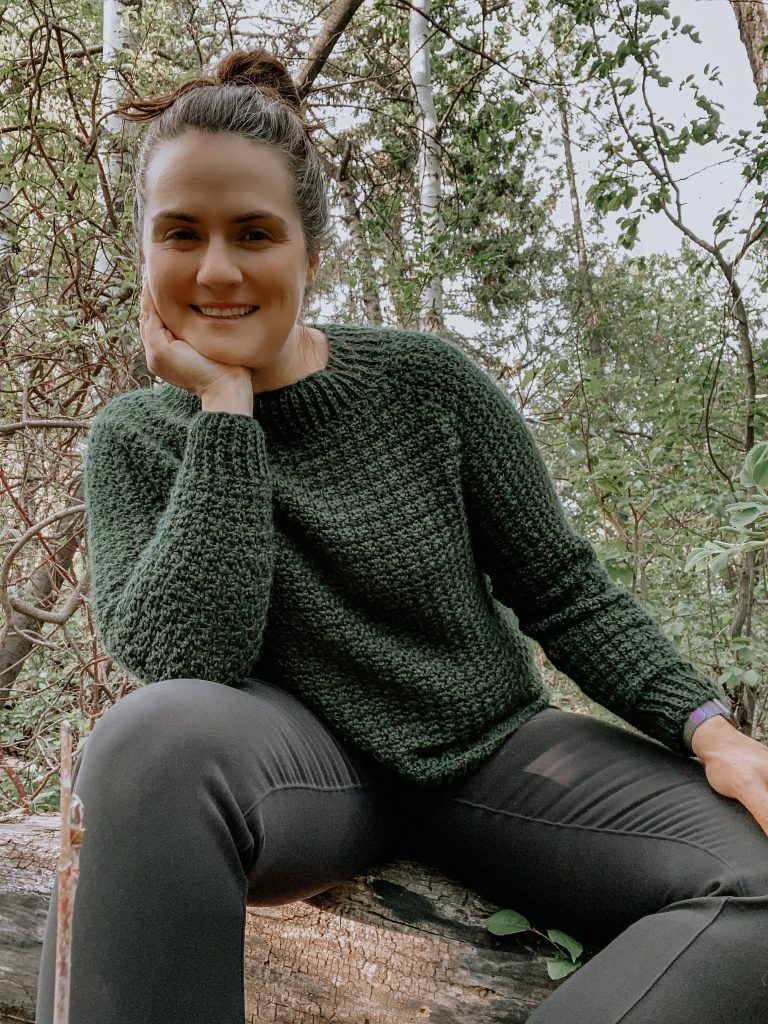
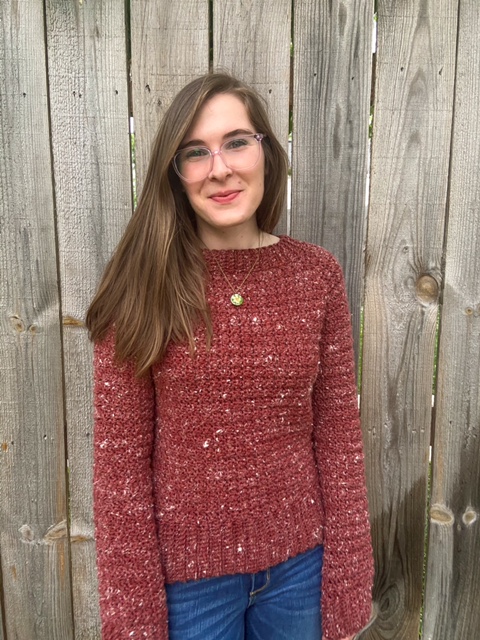
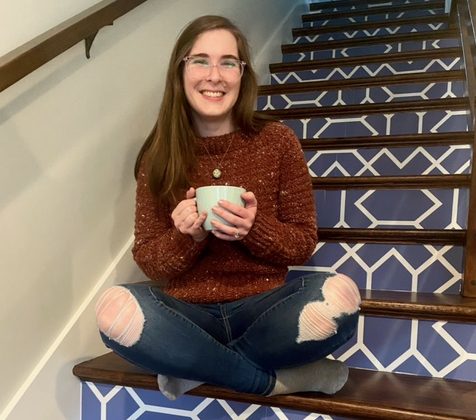
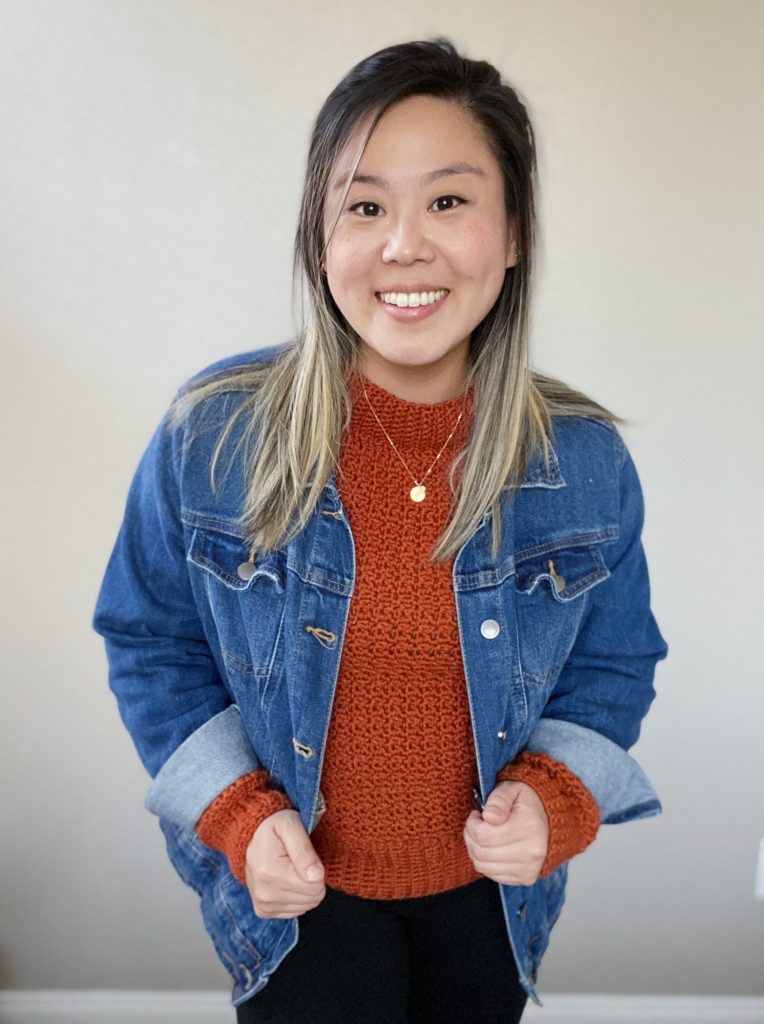

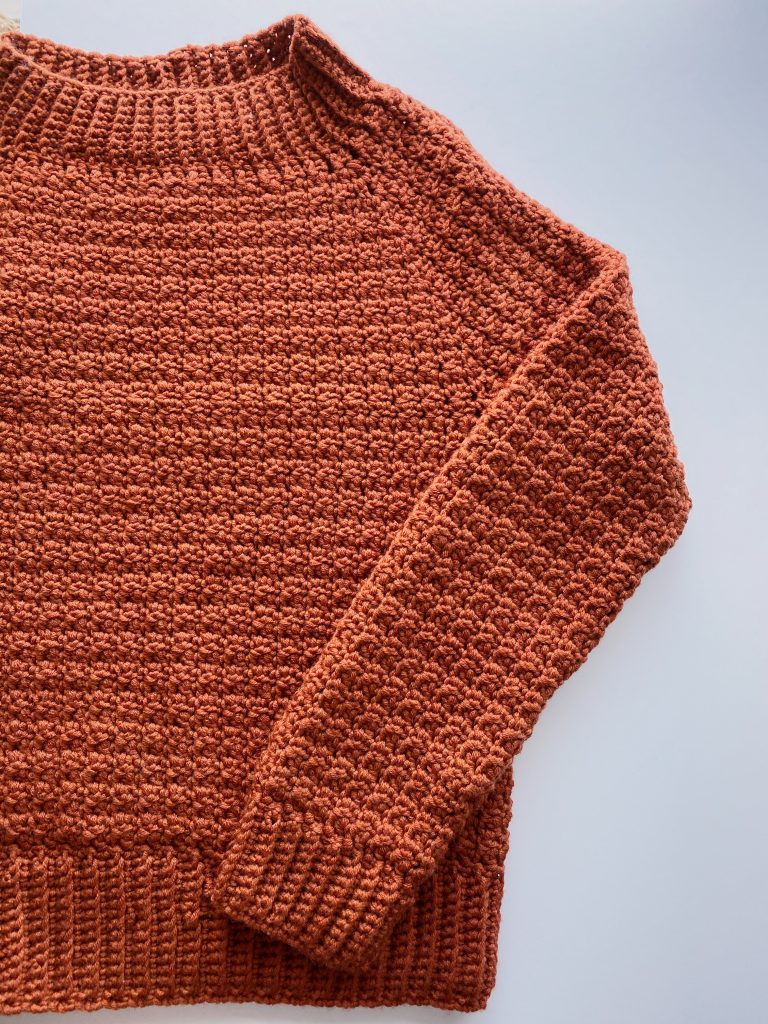
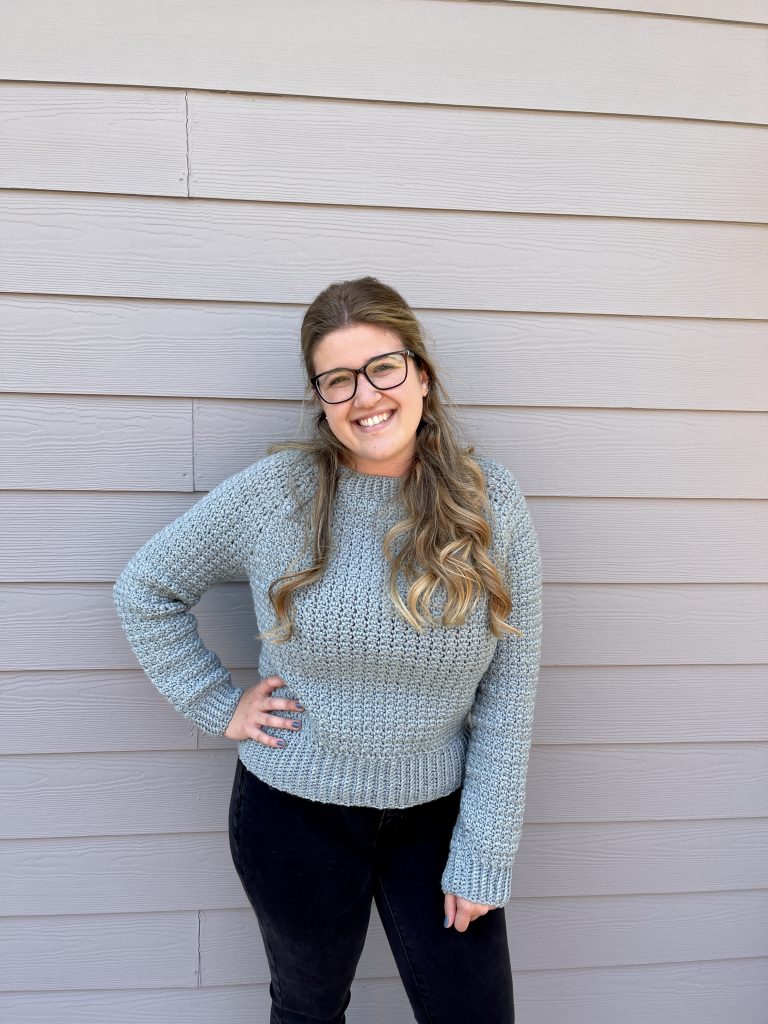
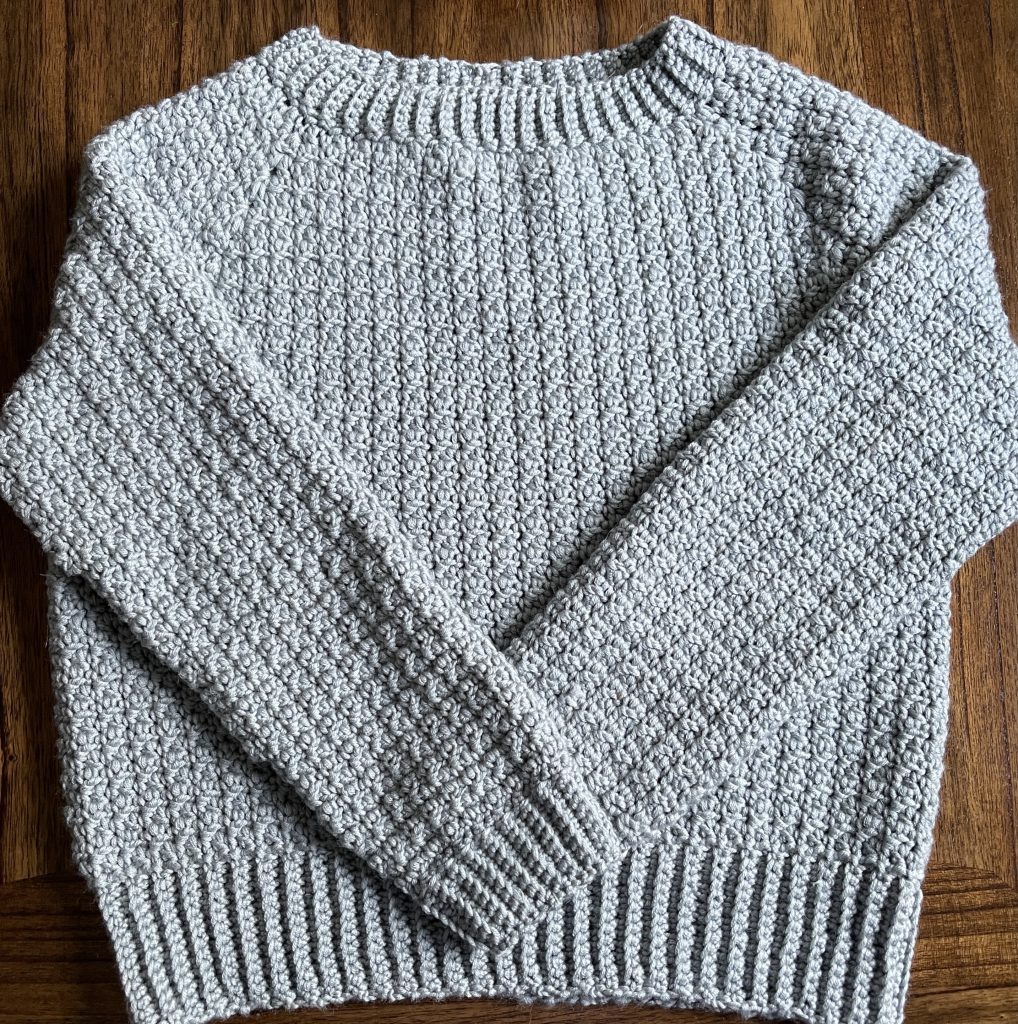

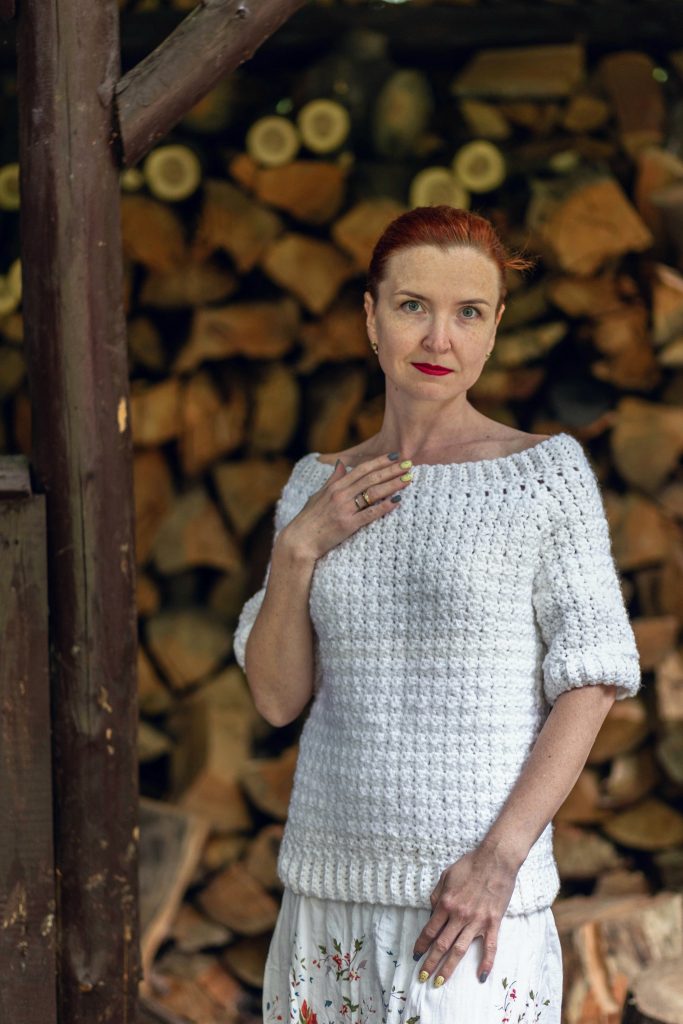
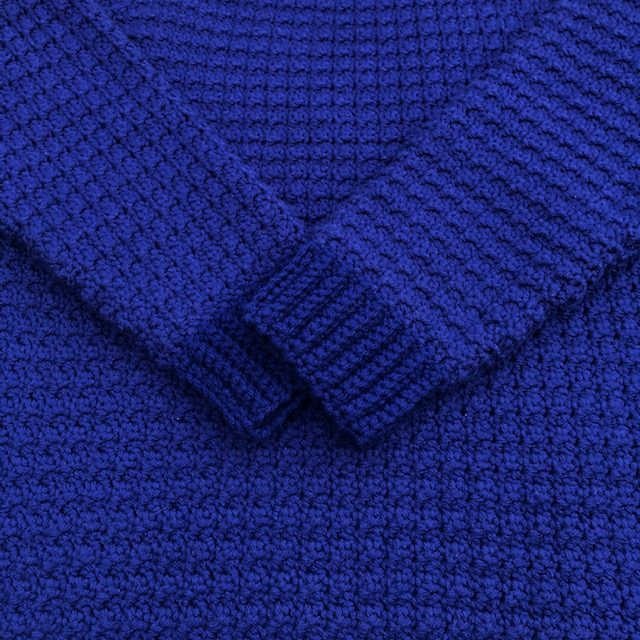
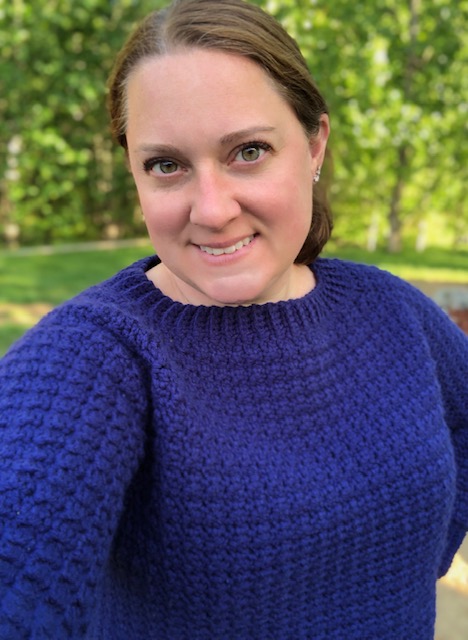
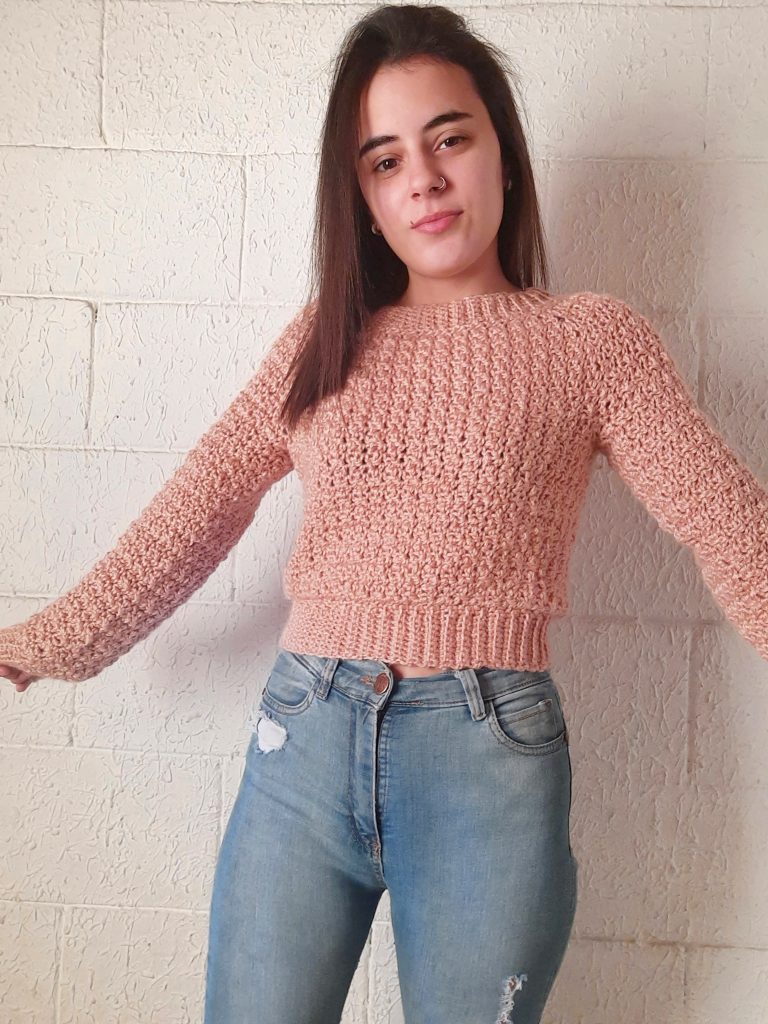
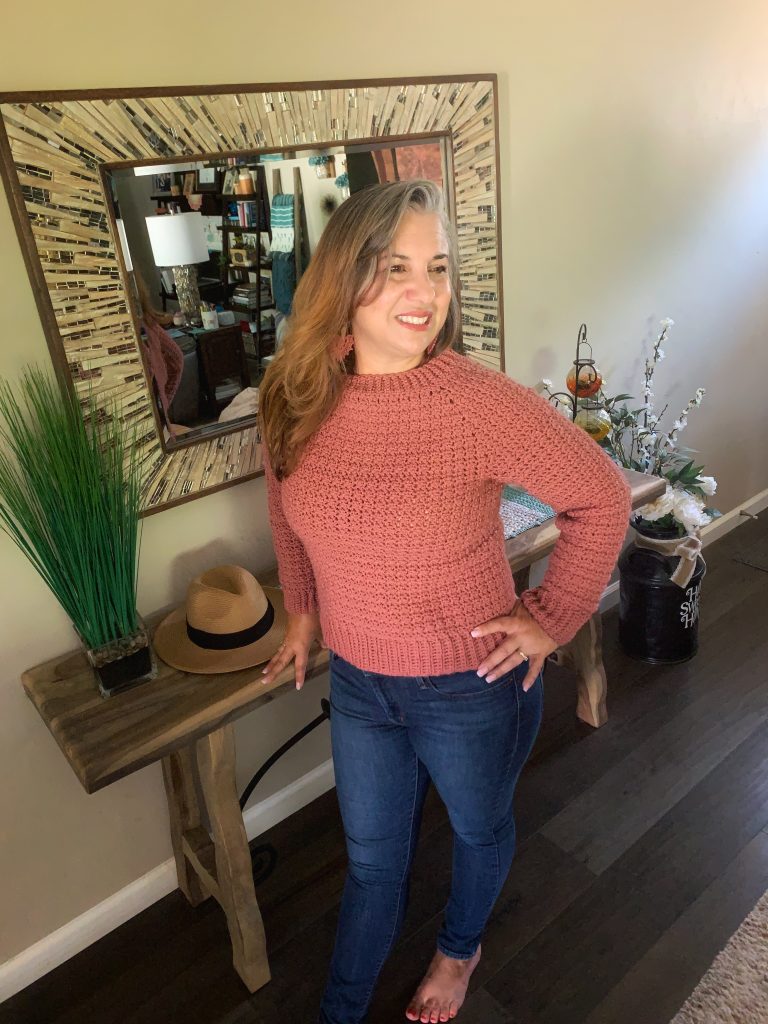
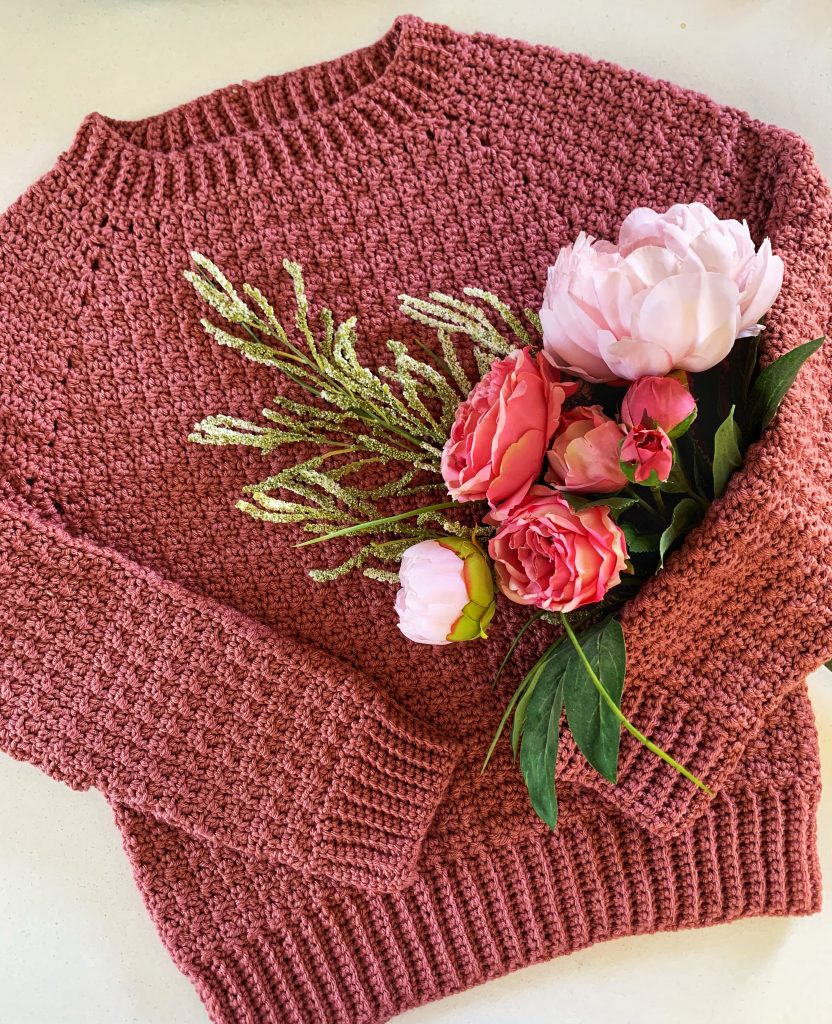
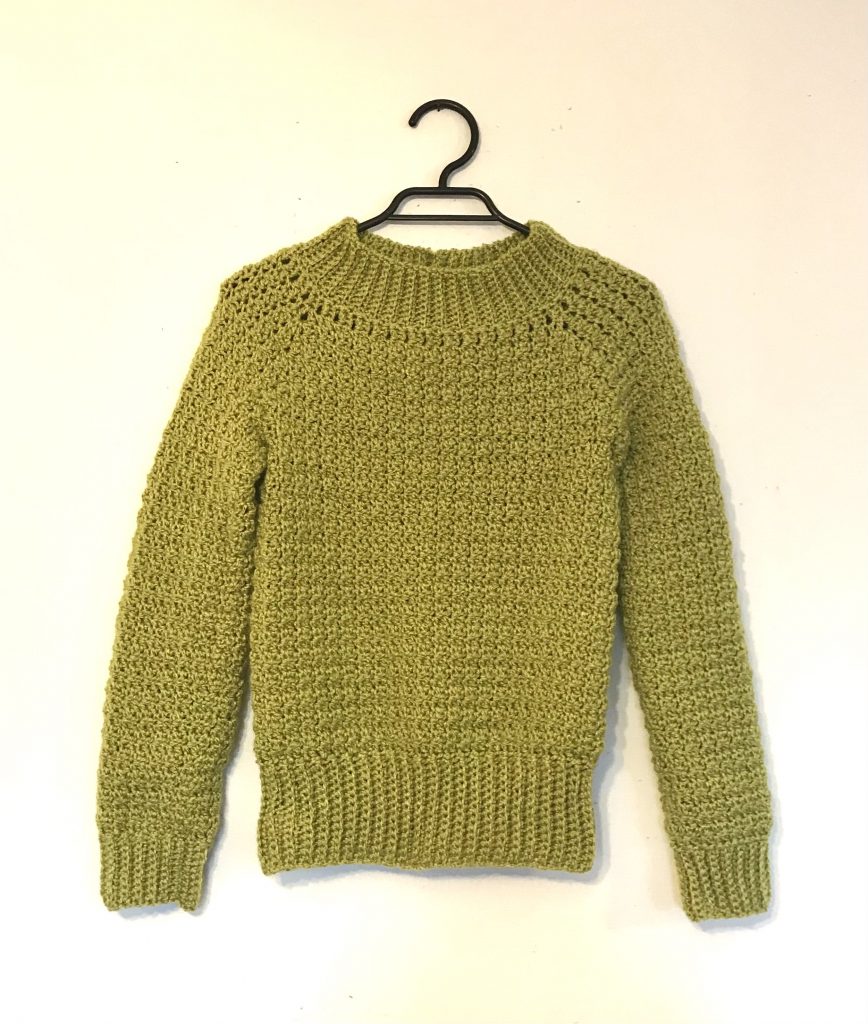
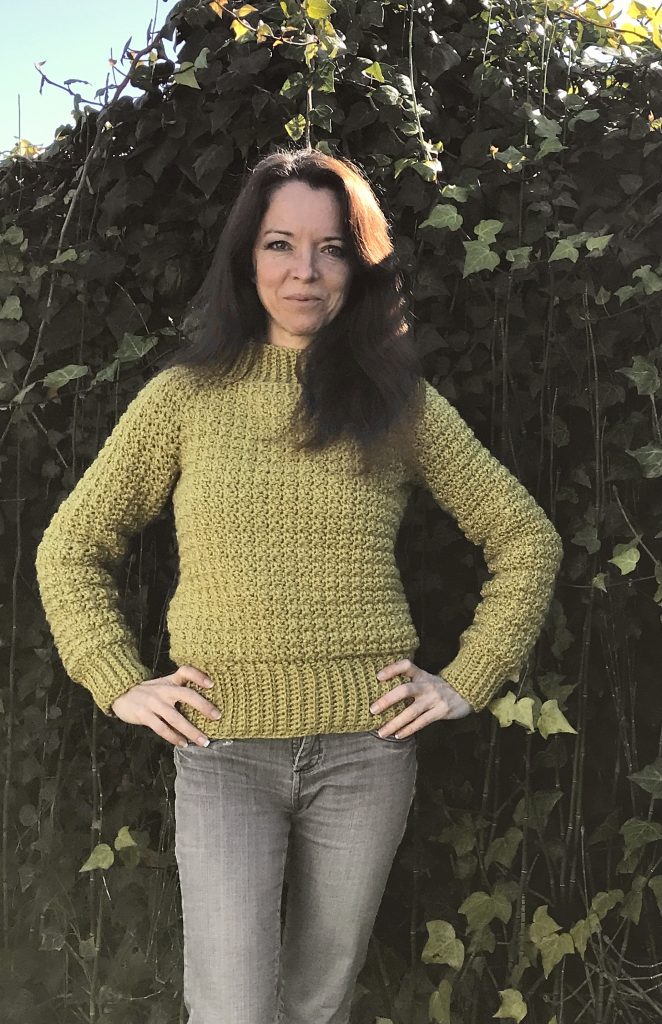
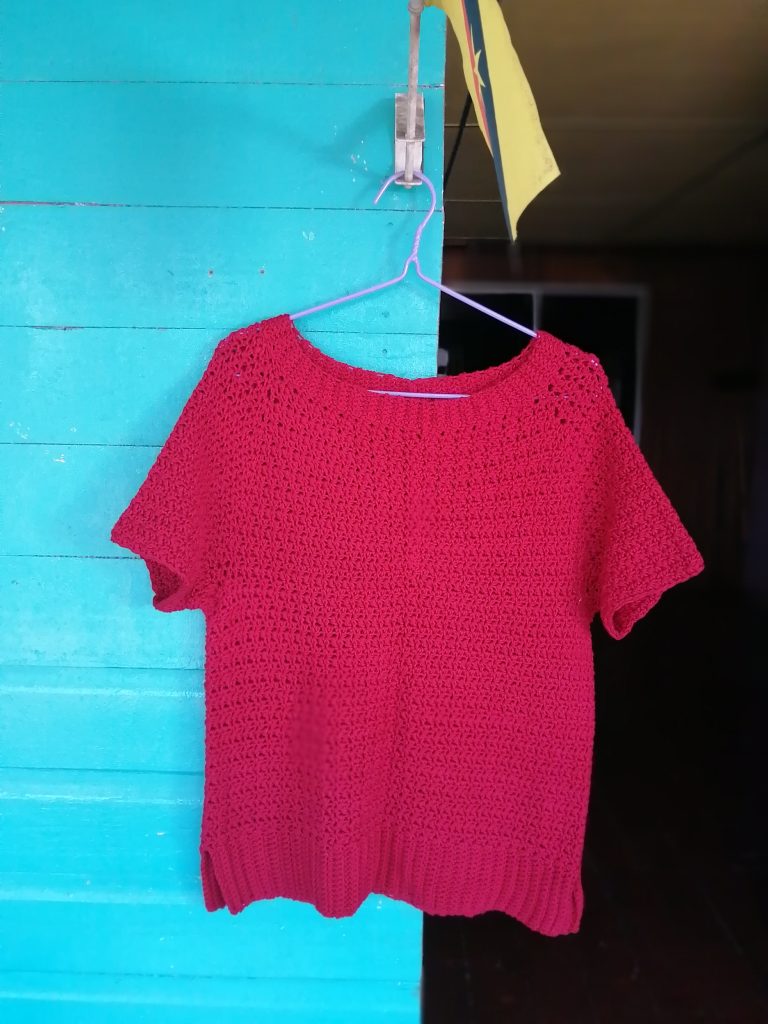
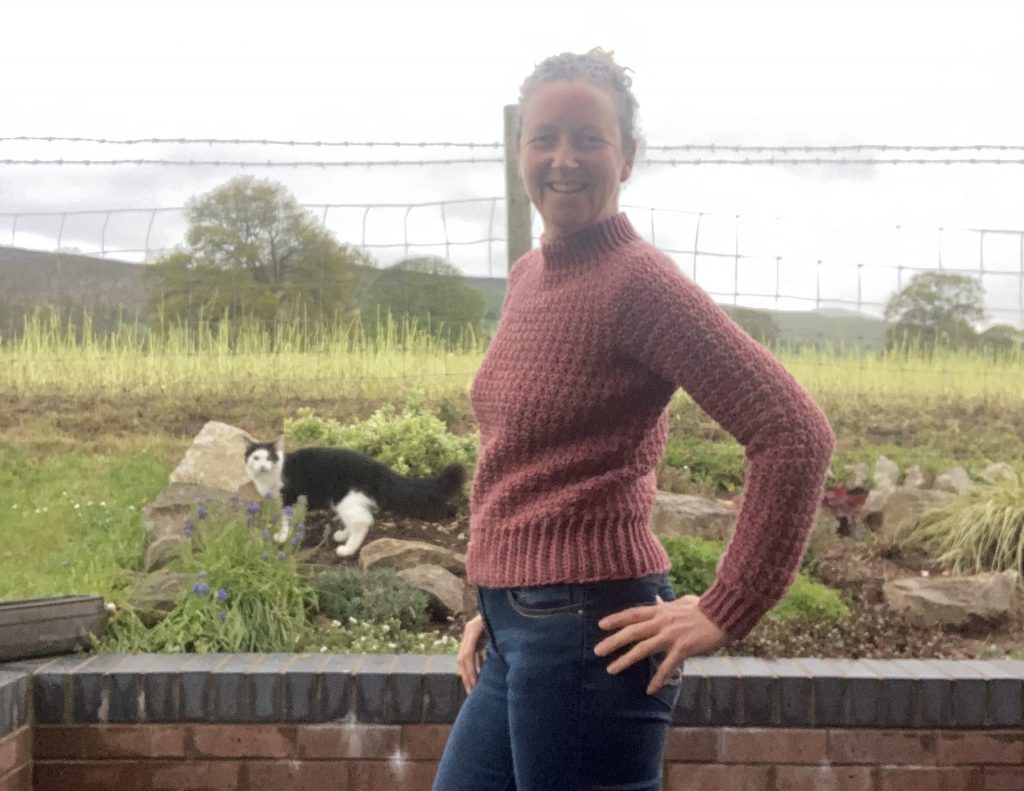
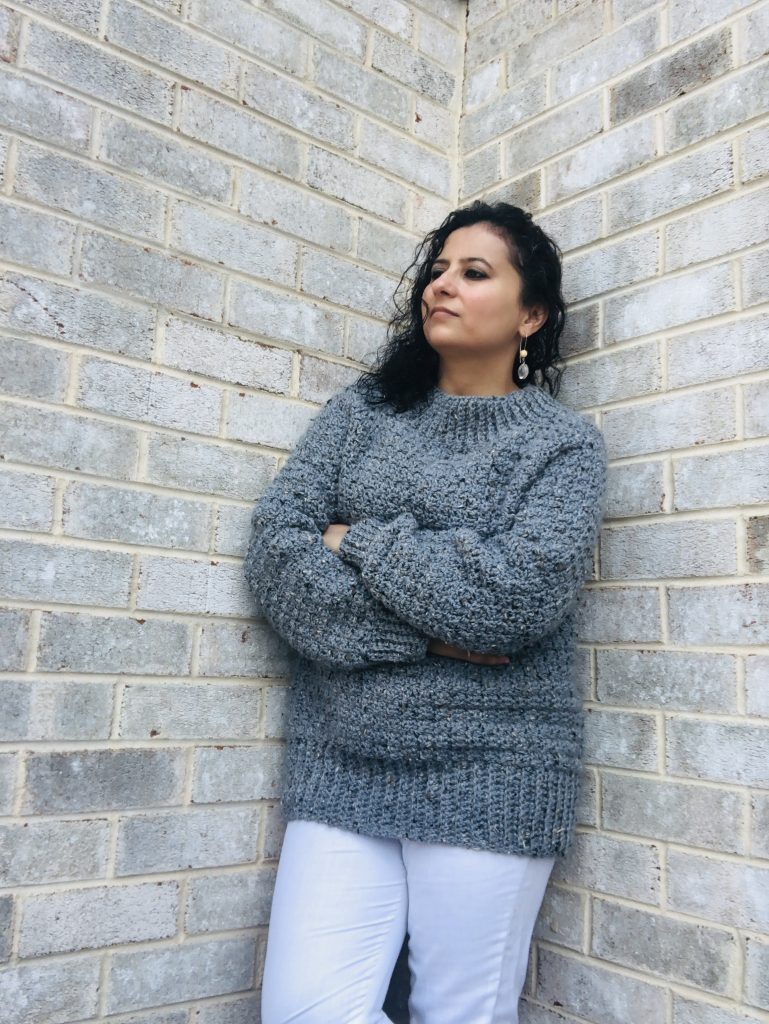
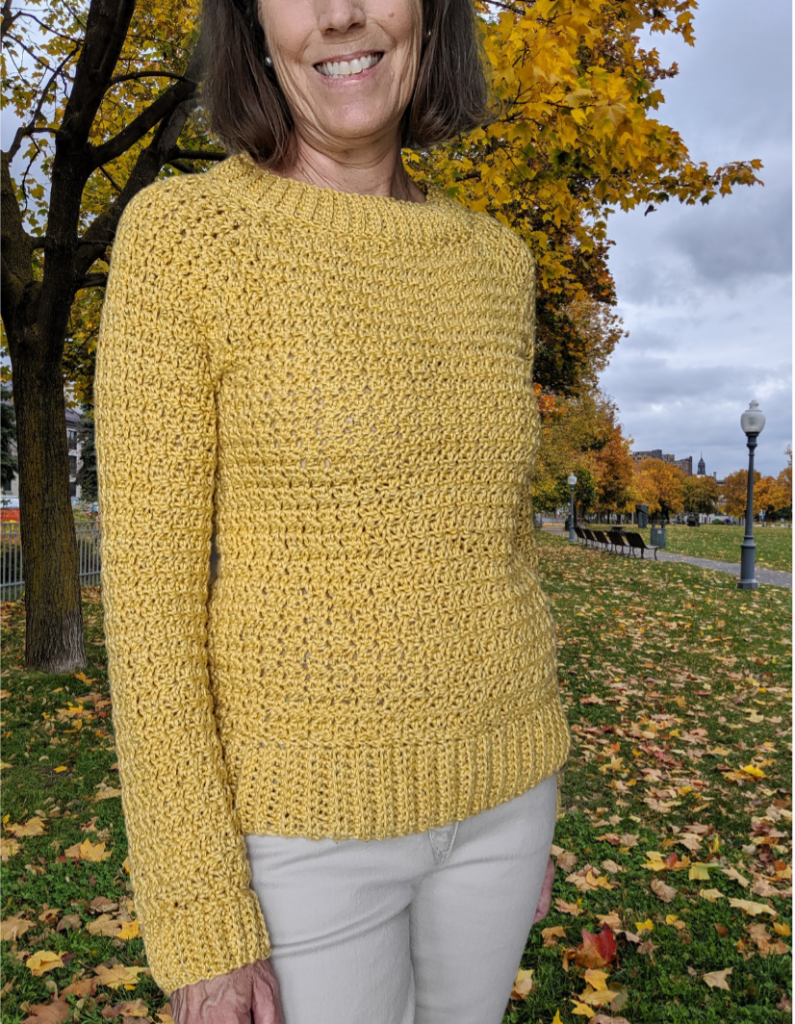
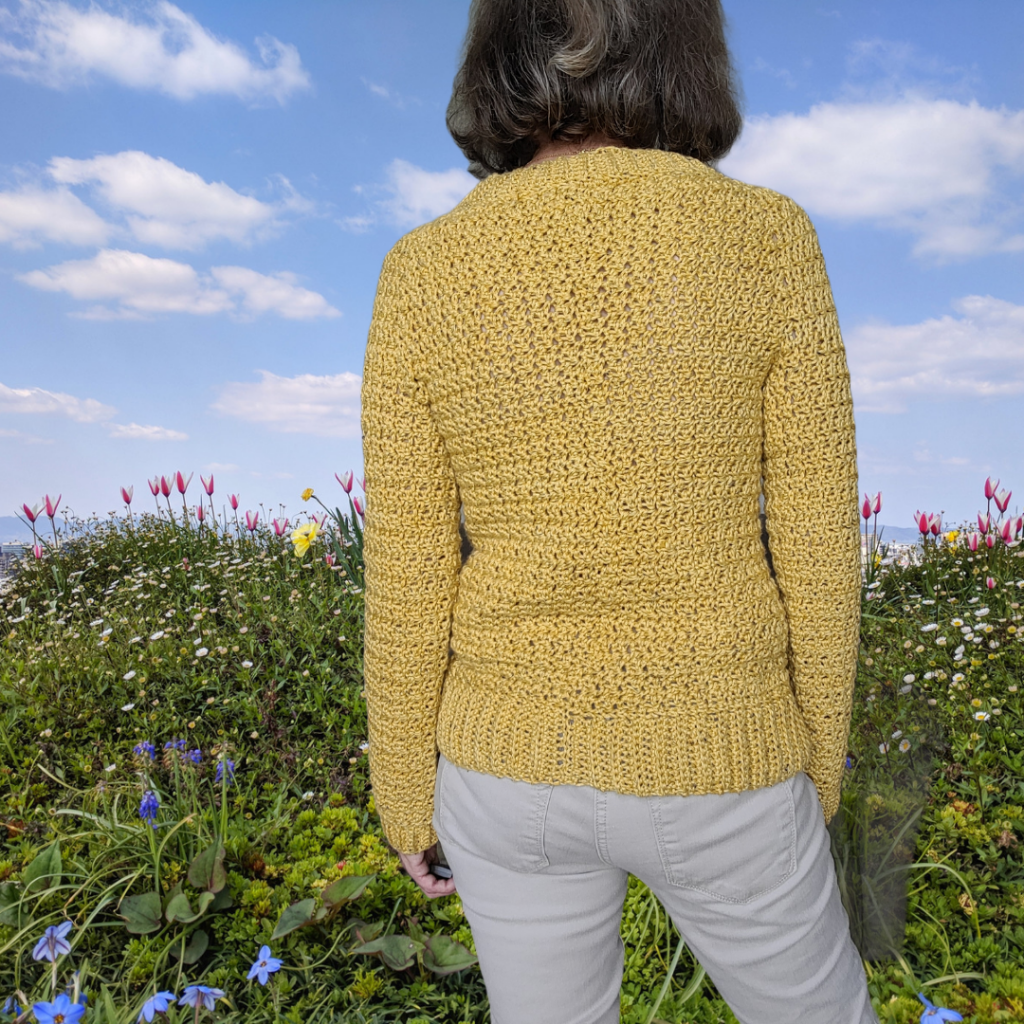
#ModernCrochetSweaters
#WhisperingPinesRaglan
Thanks so much for reading!
You can find my full print book, Modern Crochet Sweaters: 20 Chic Designs For Everyday Wear on the shelves of all major retailers or see purchasing options here!
To shop this Whispering Pines Raglan crochet pattern, find it on Ravelry, Etsy, or my website!
Shop WeCrochet City Tweed yarn here.
x
Janine
For exclusive discounts on all new patterns, join the Knits ‘N Knots newsletter list here!
